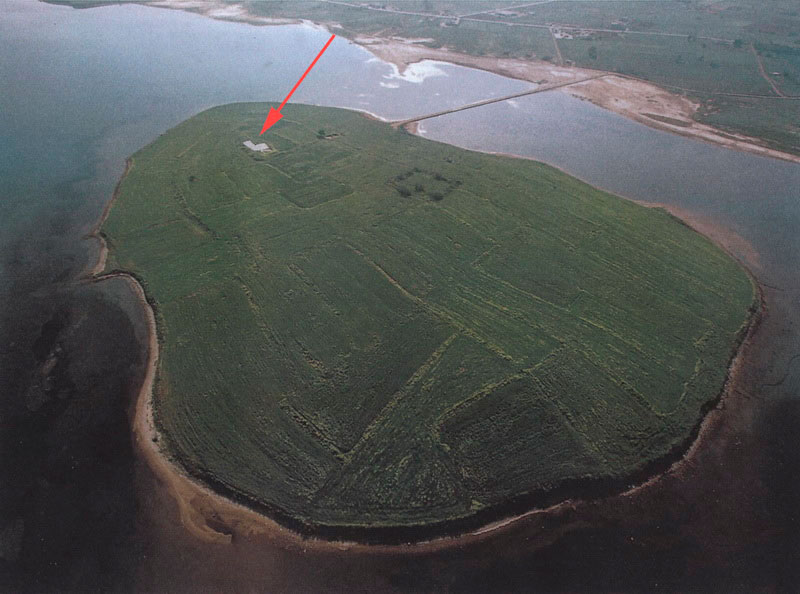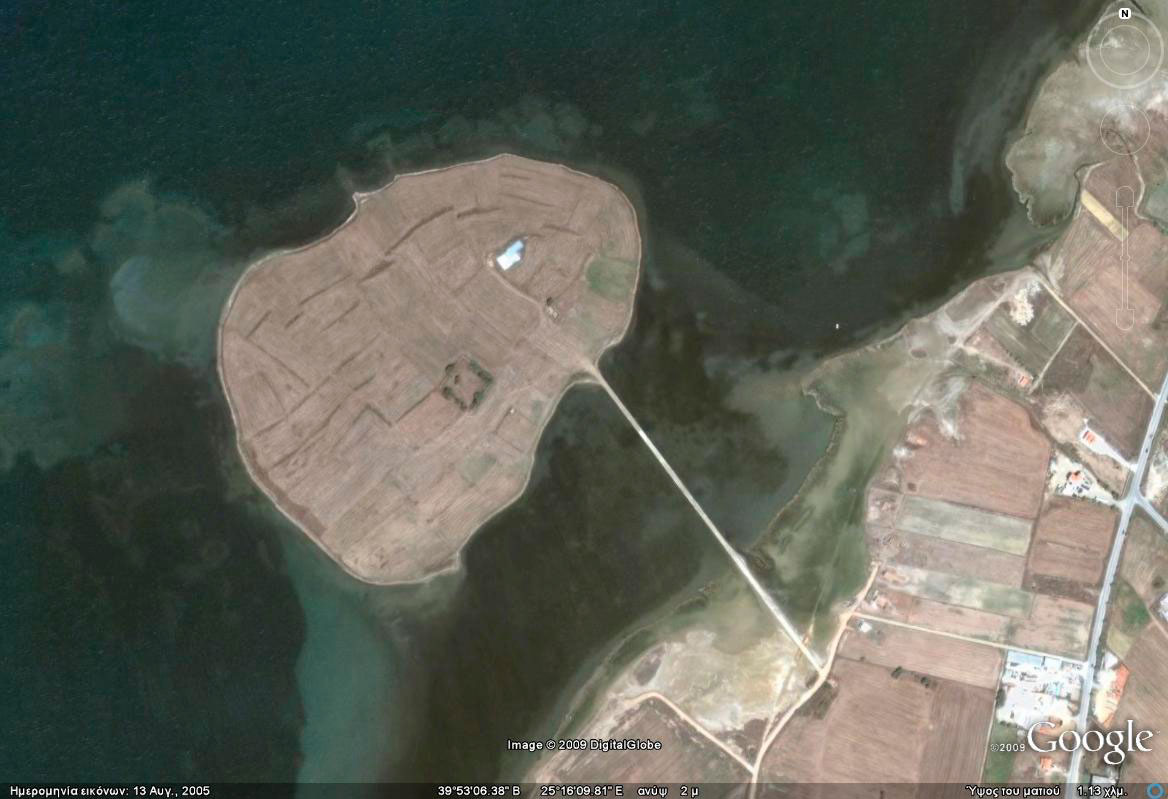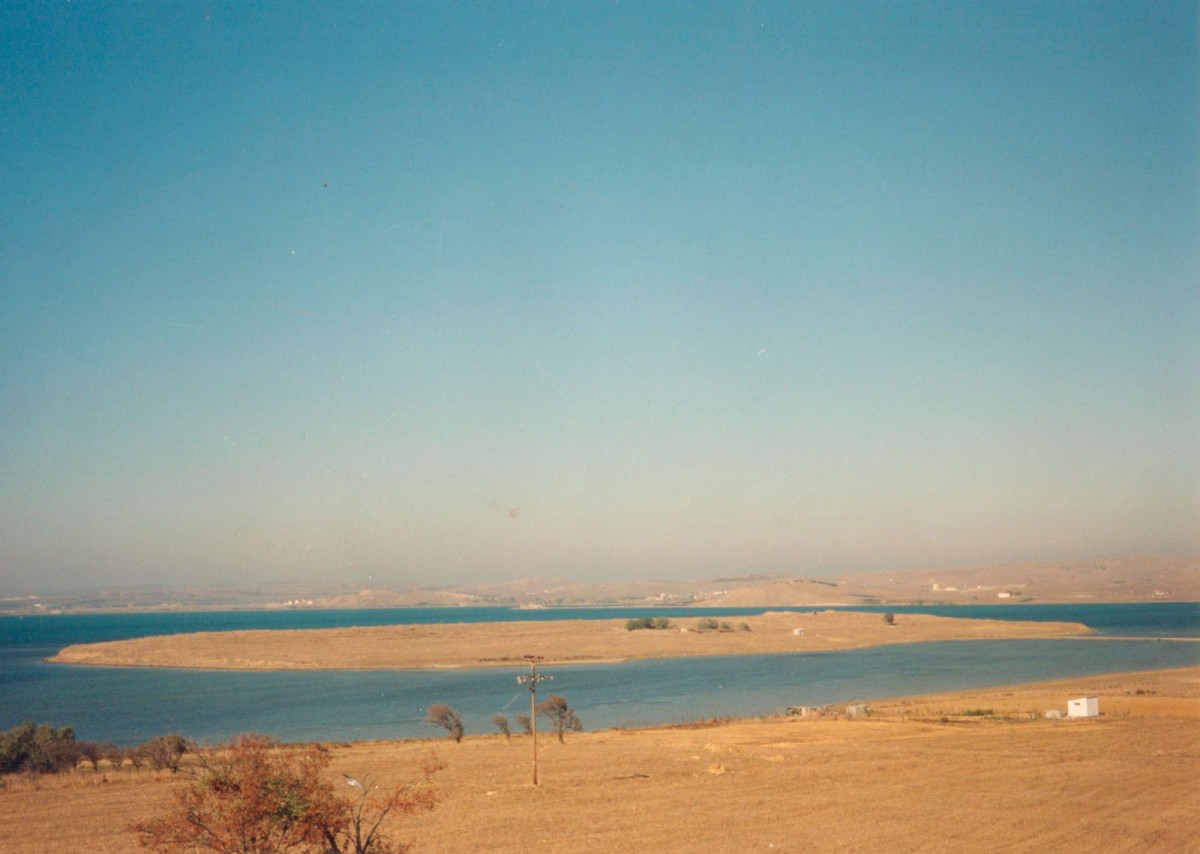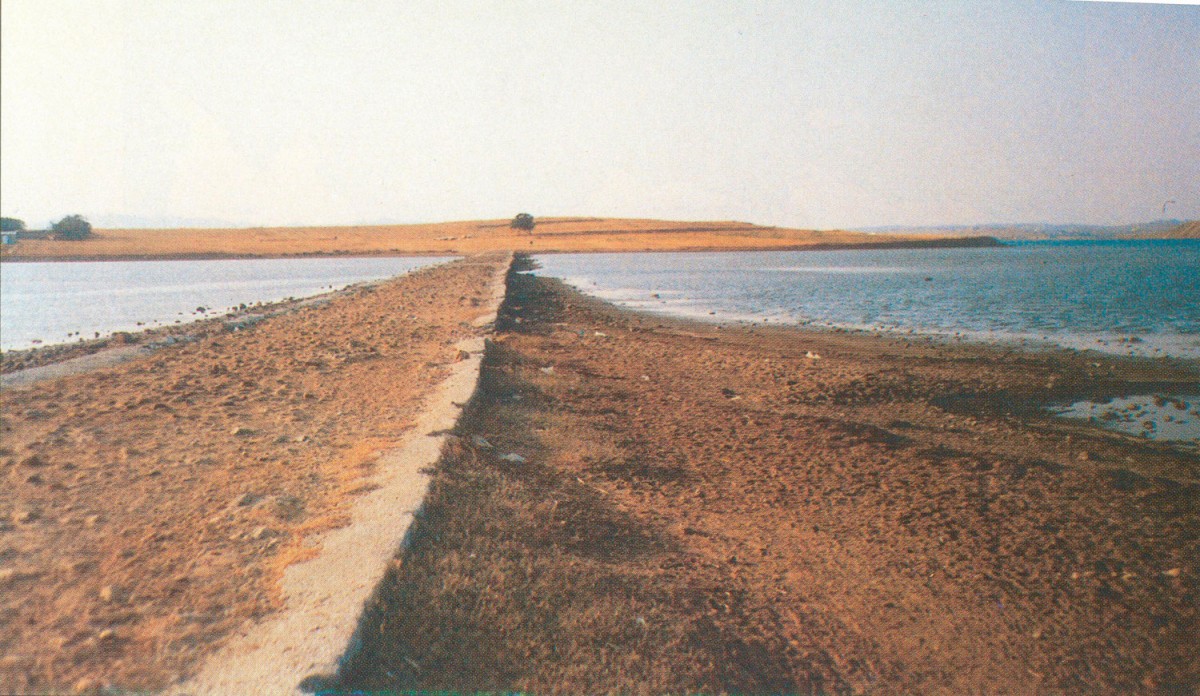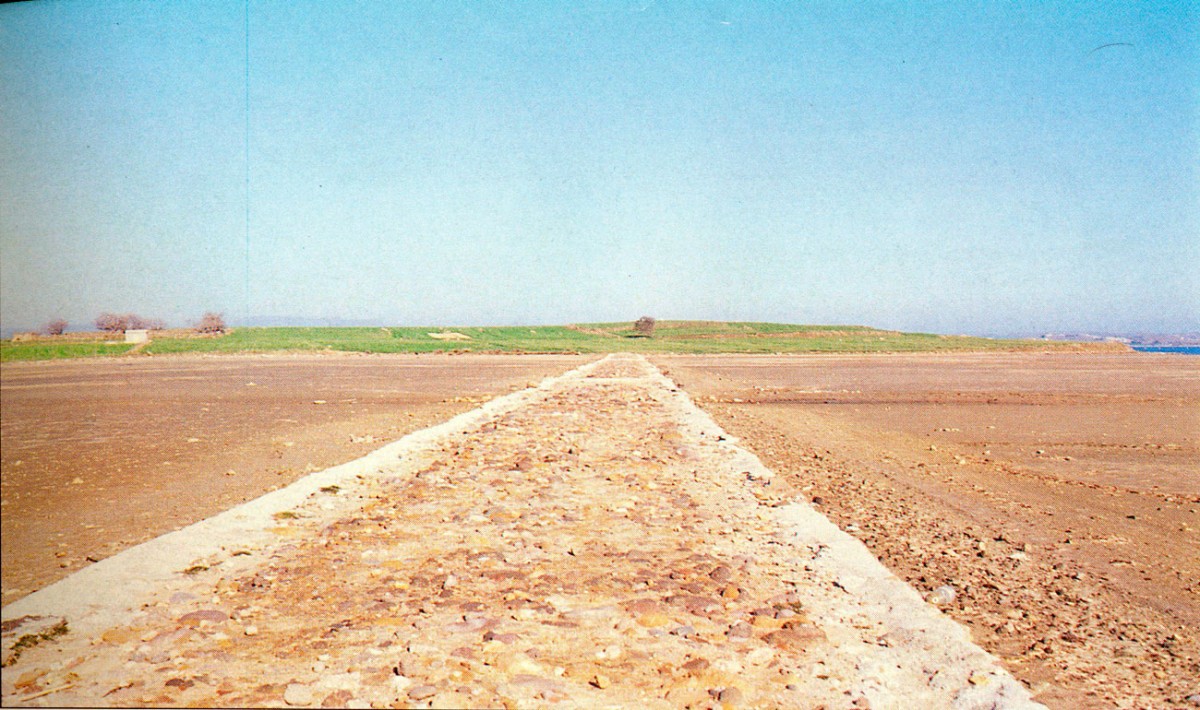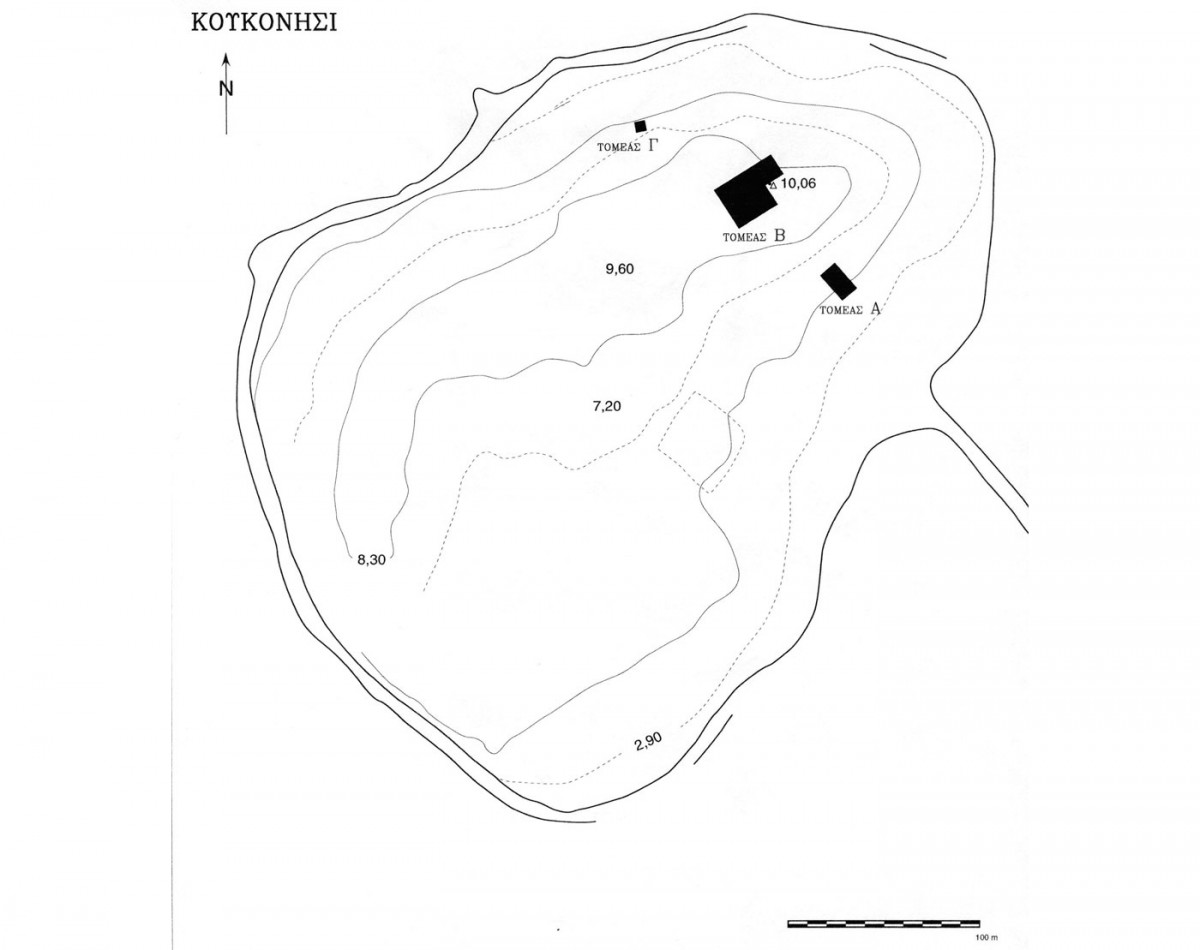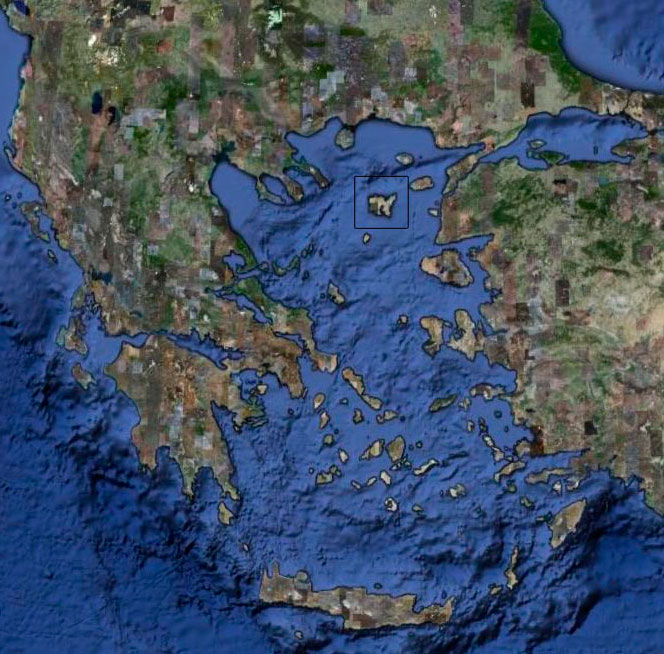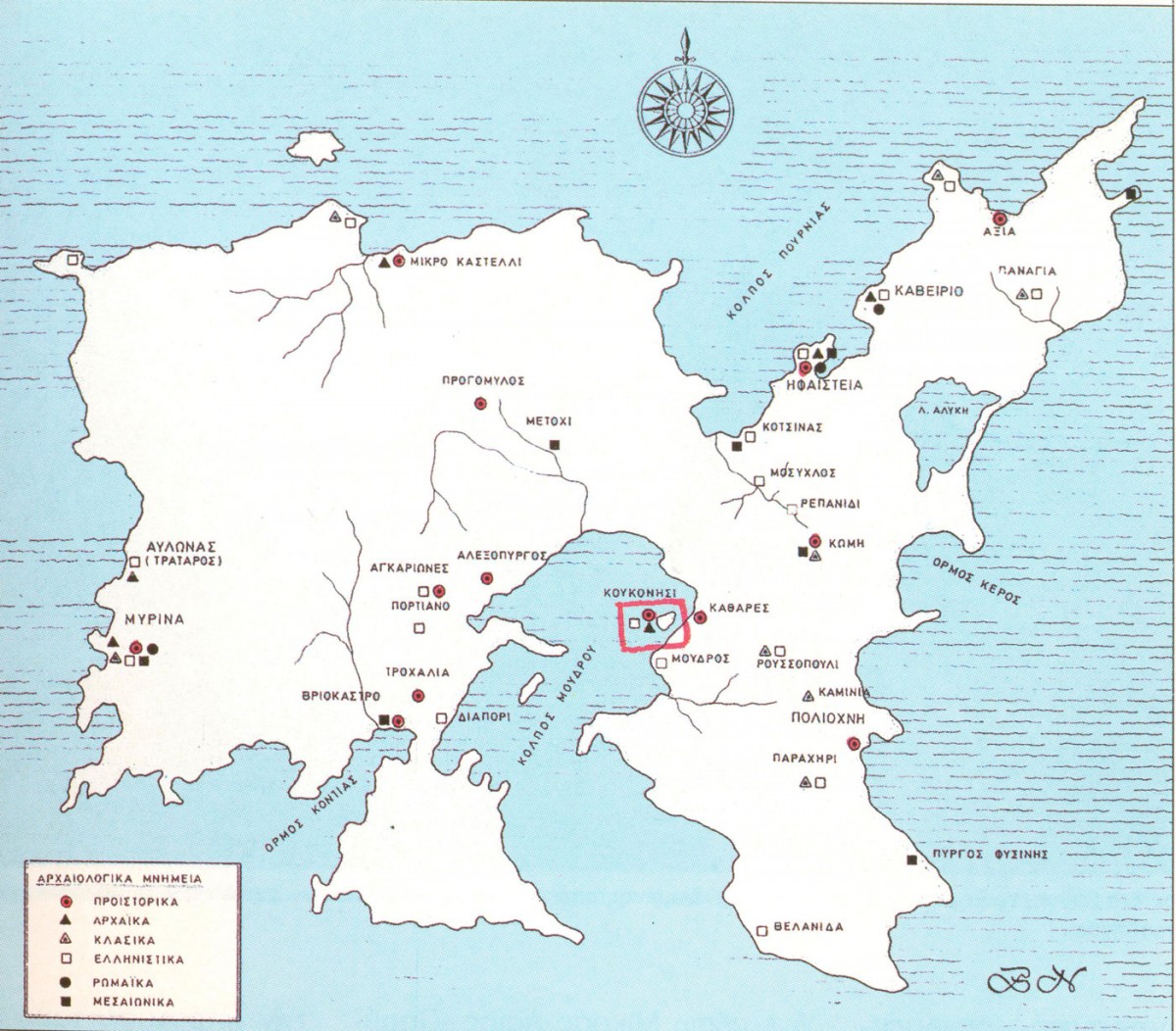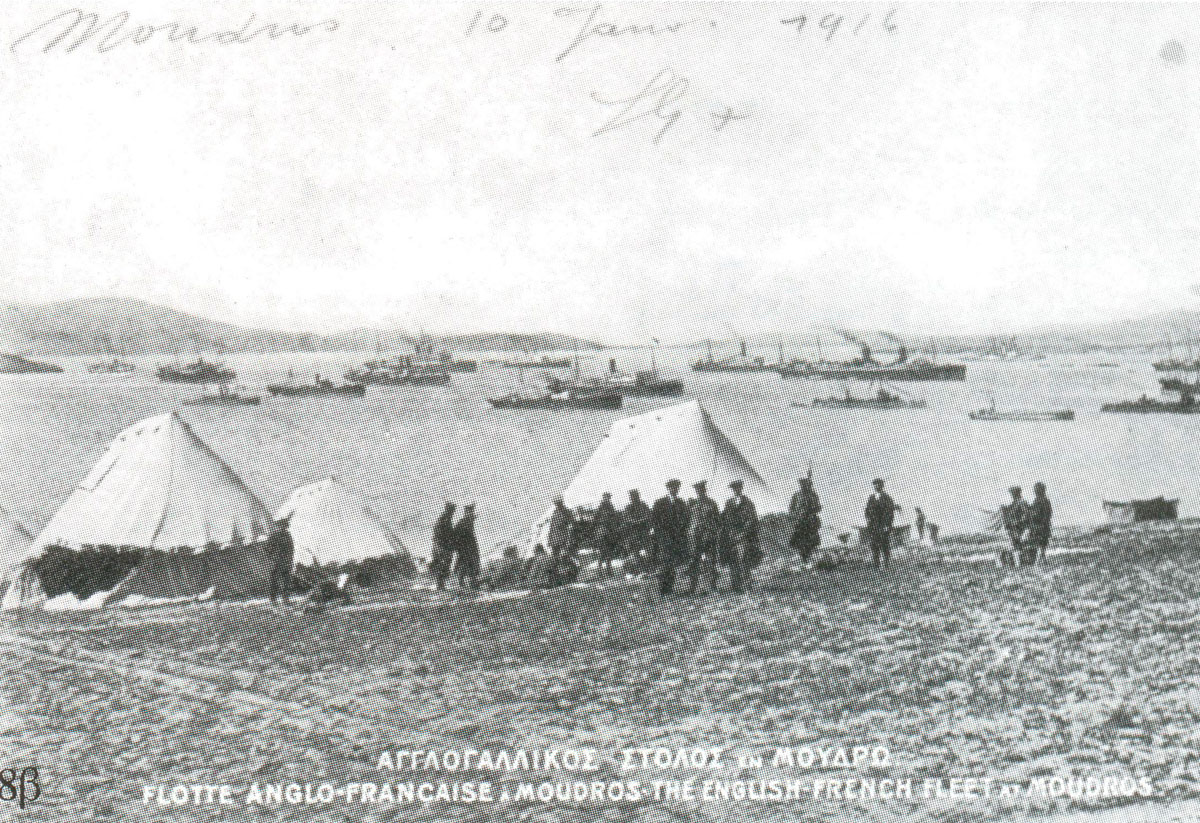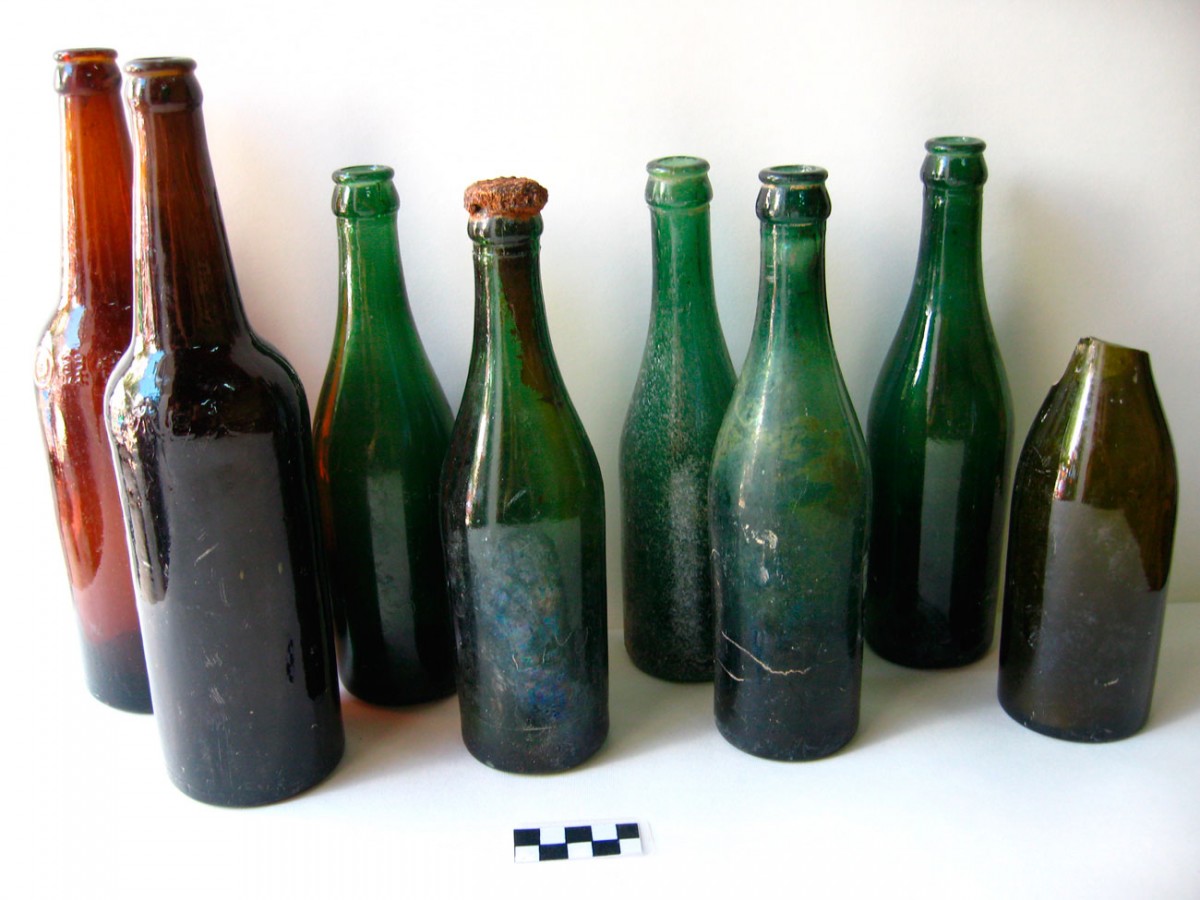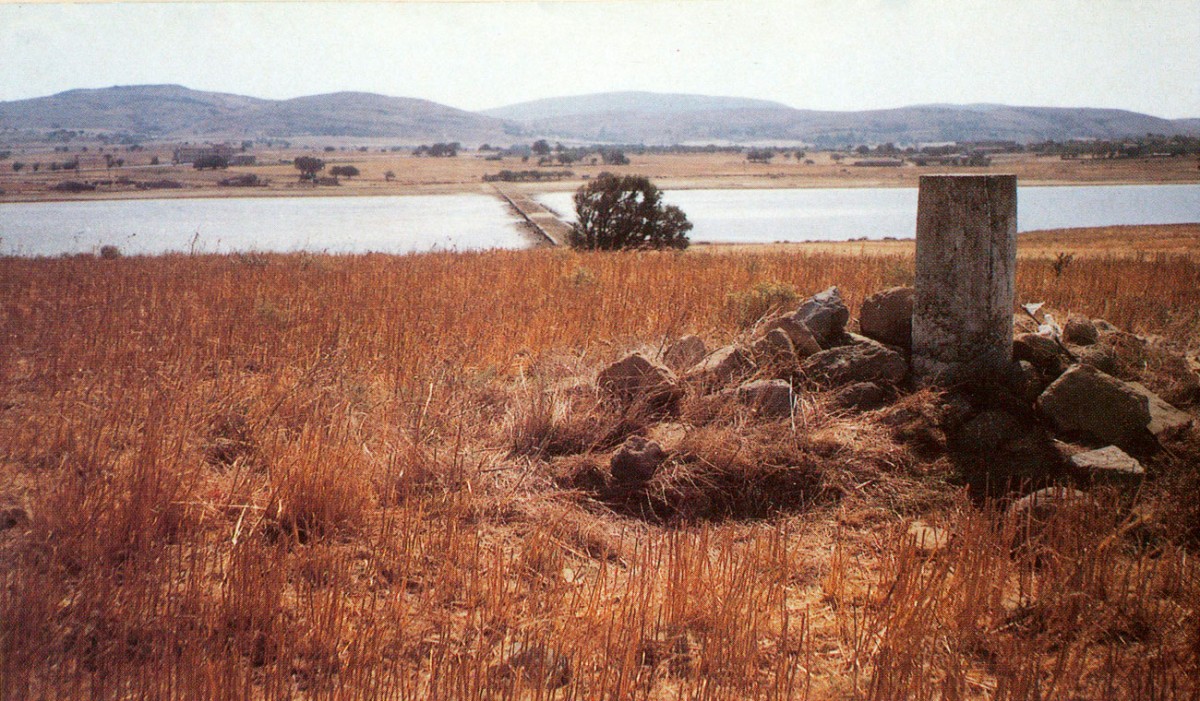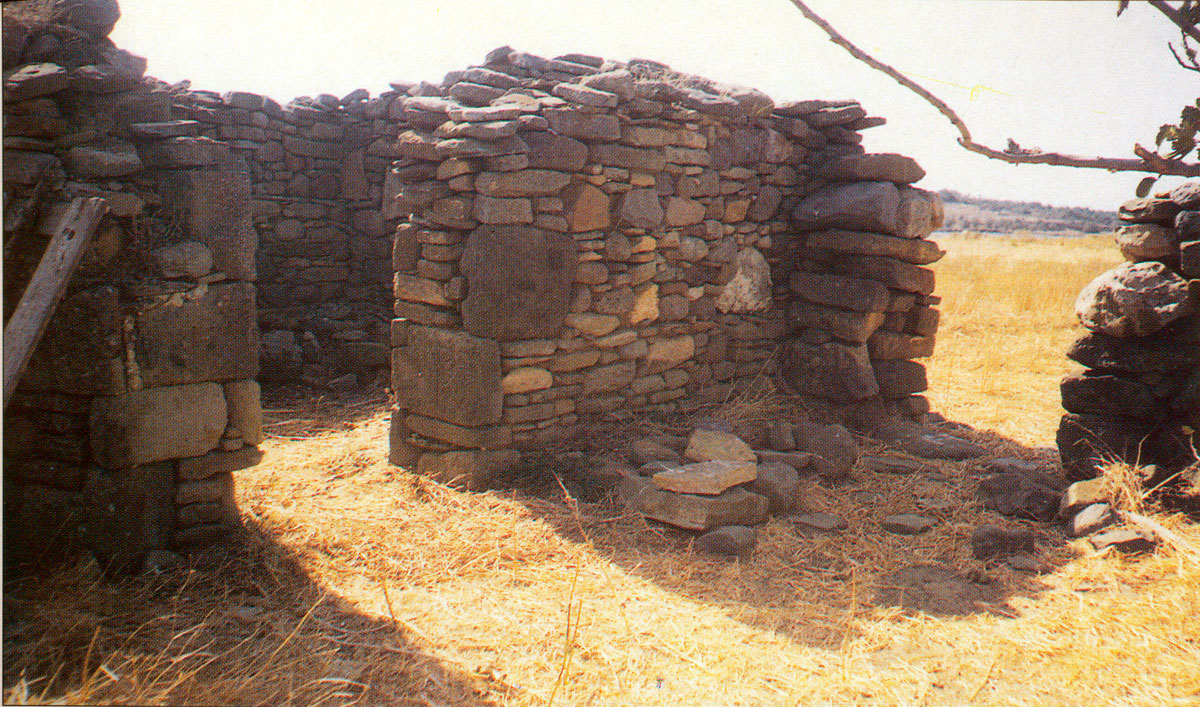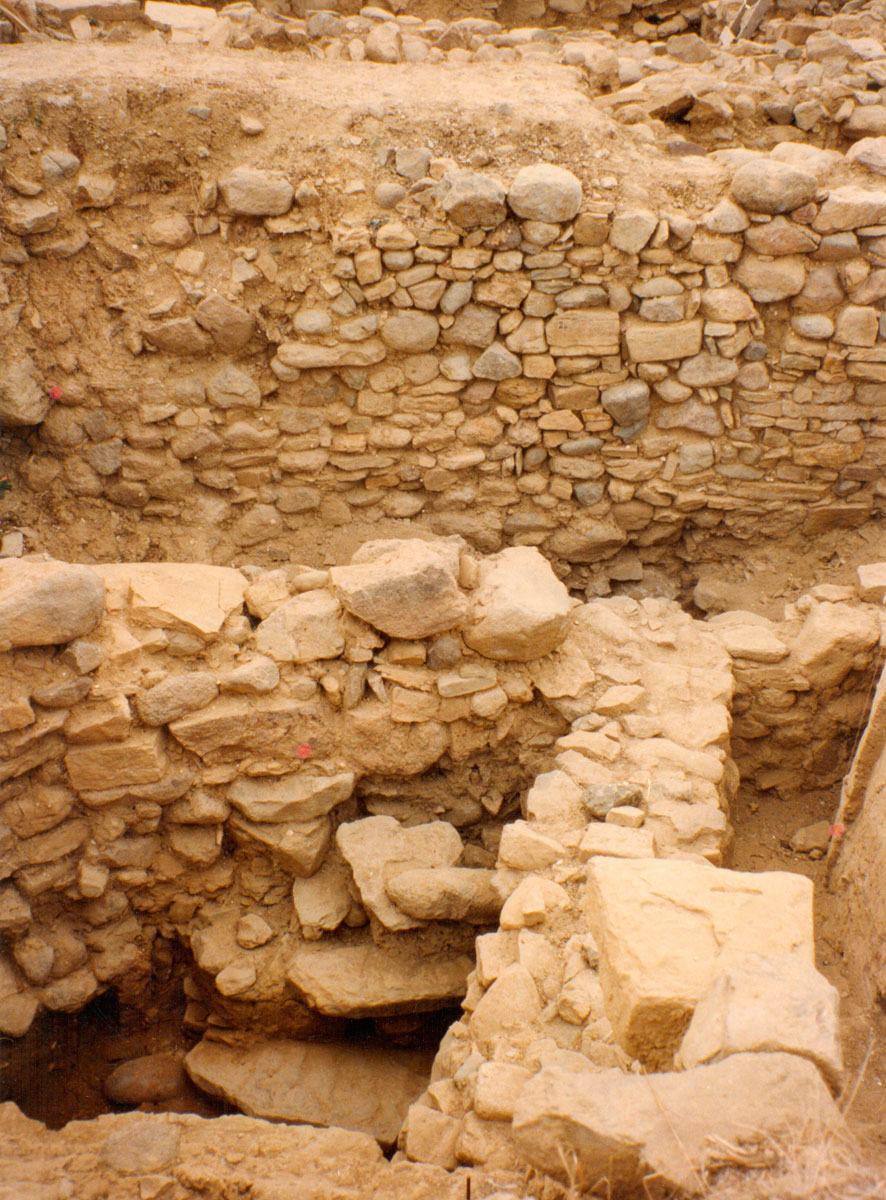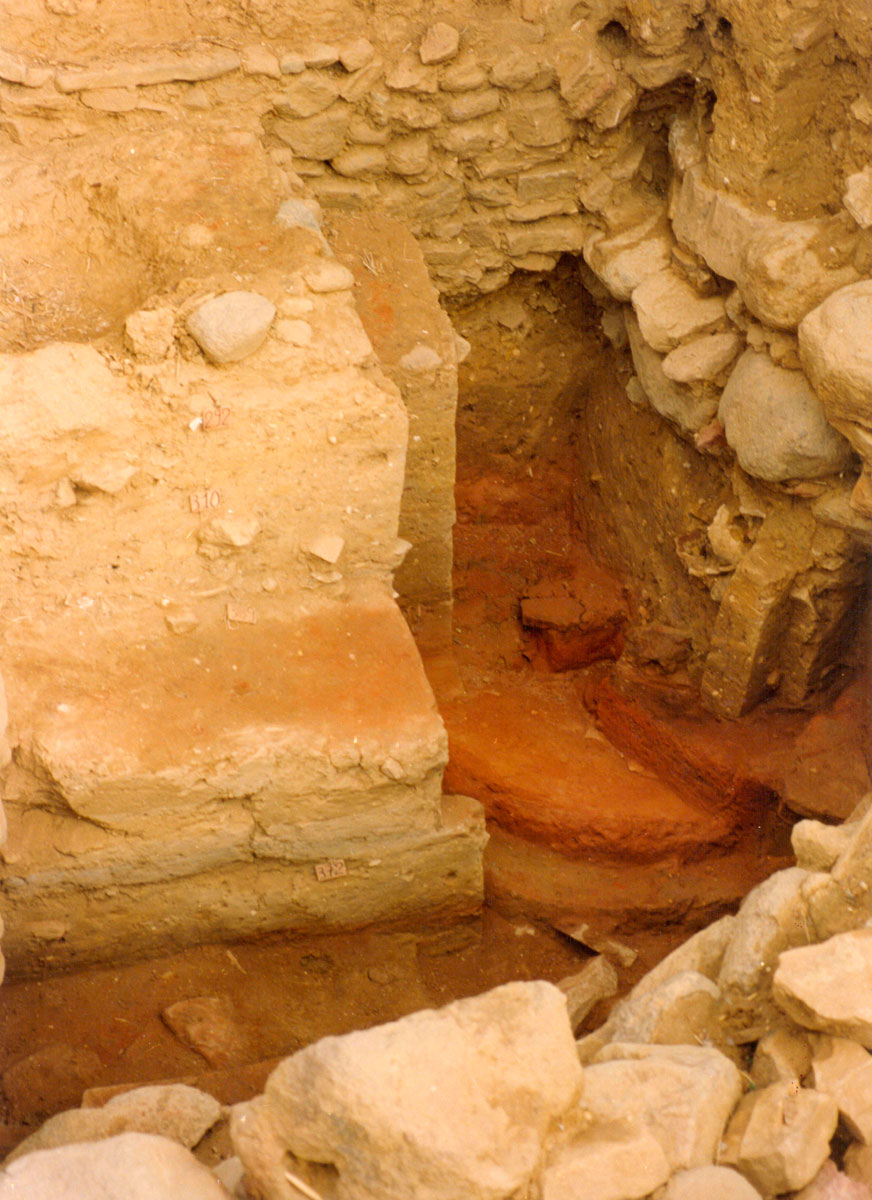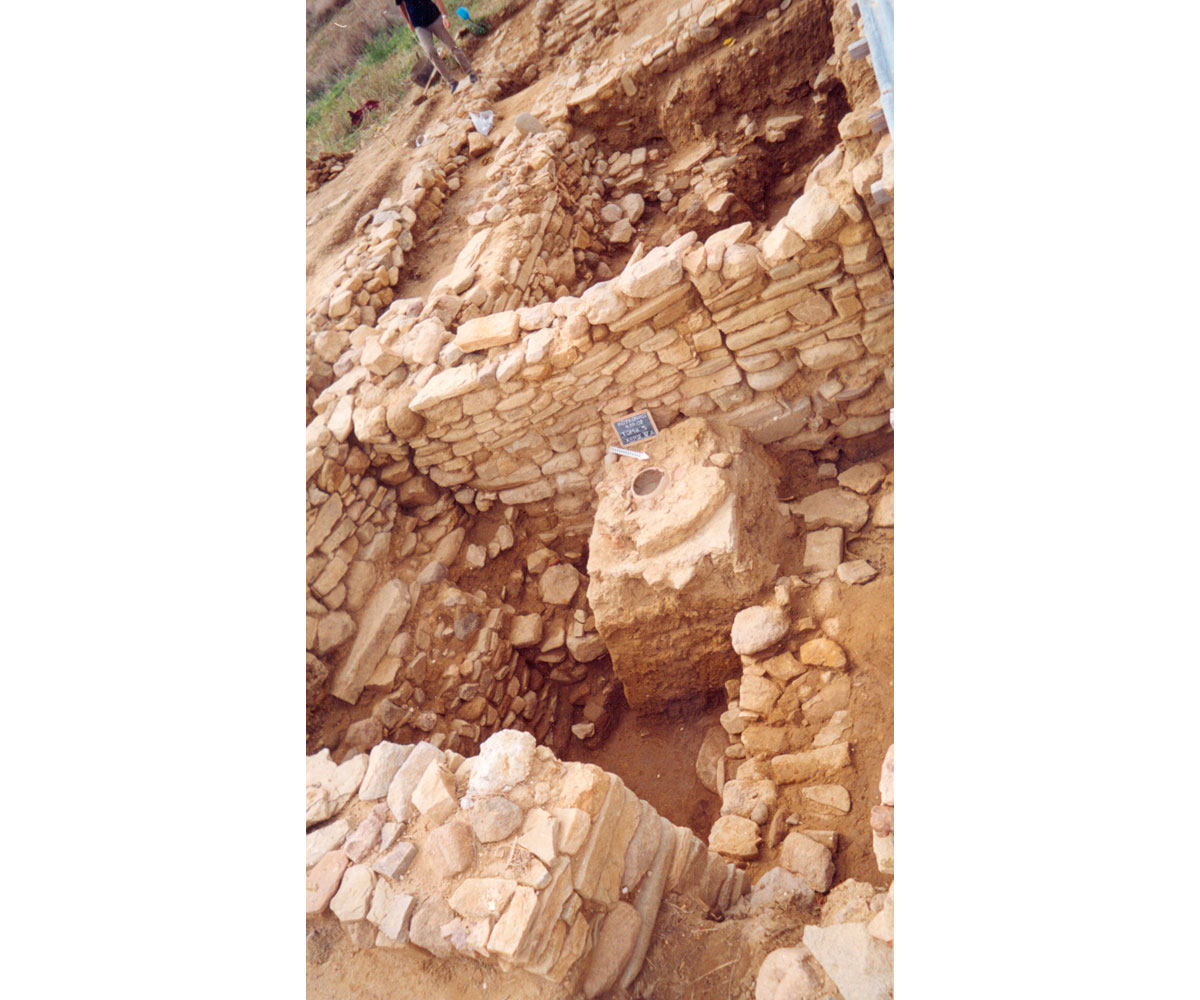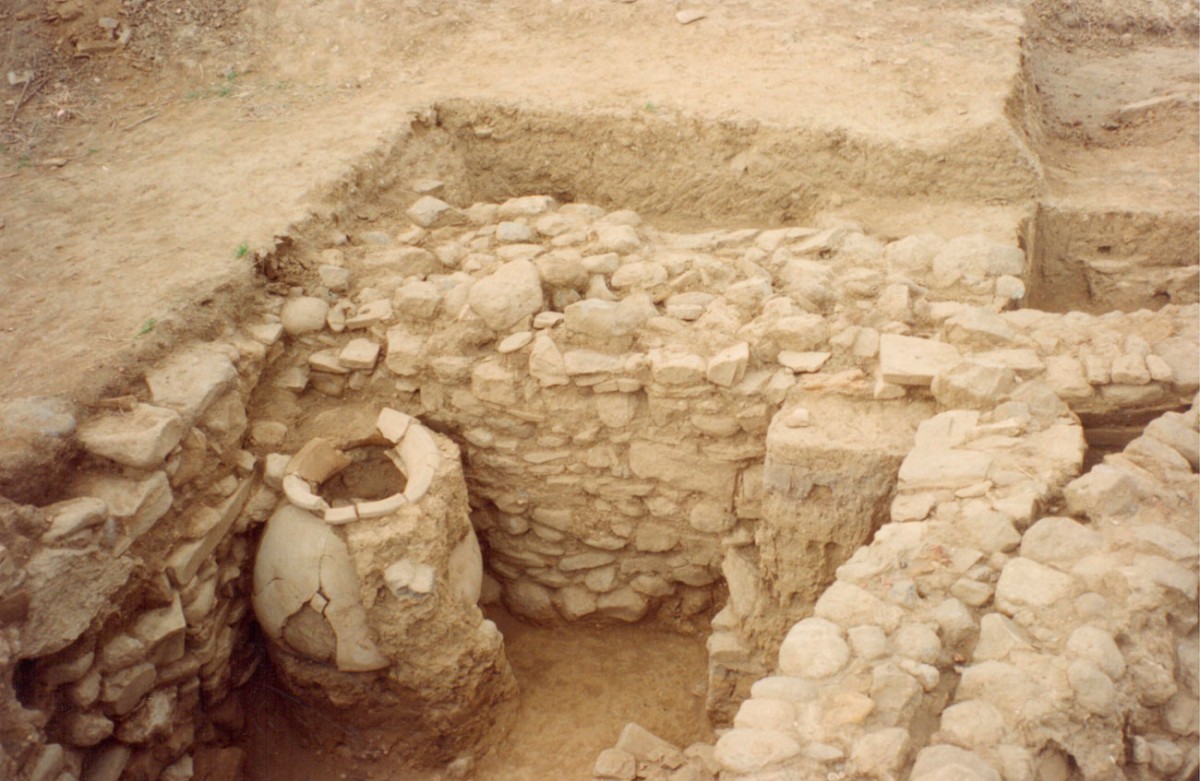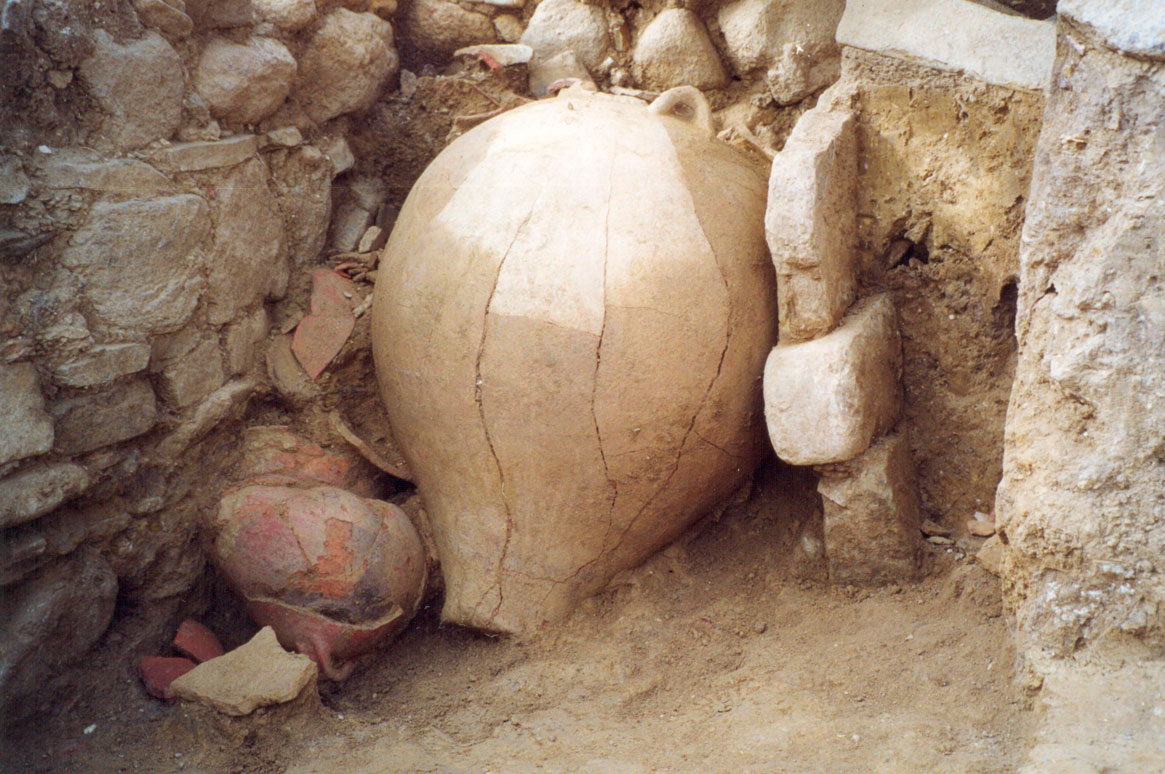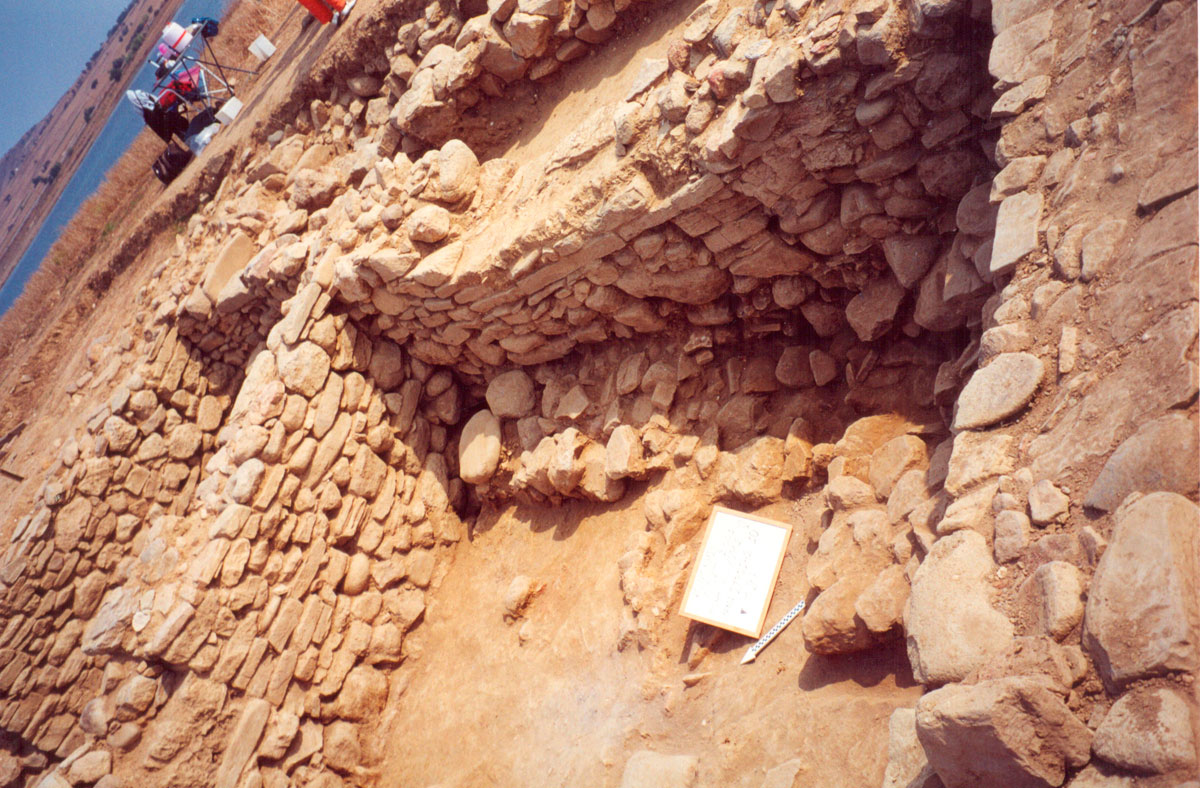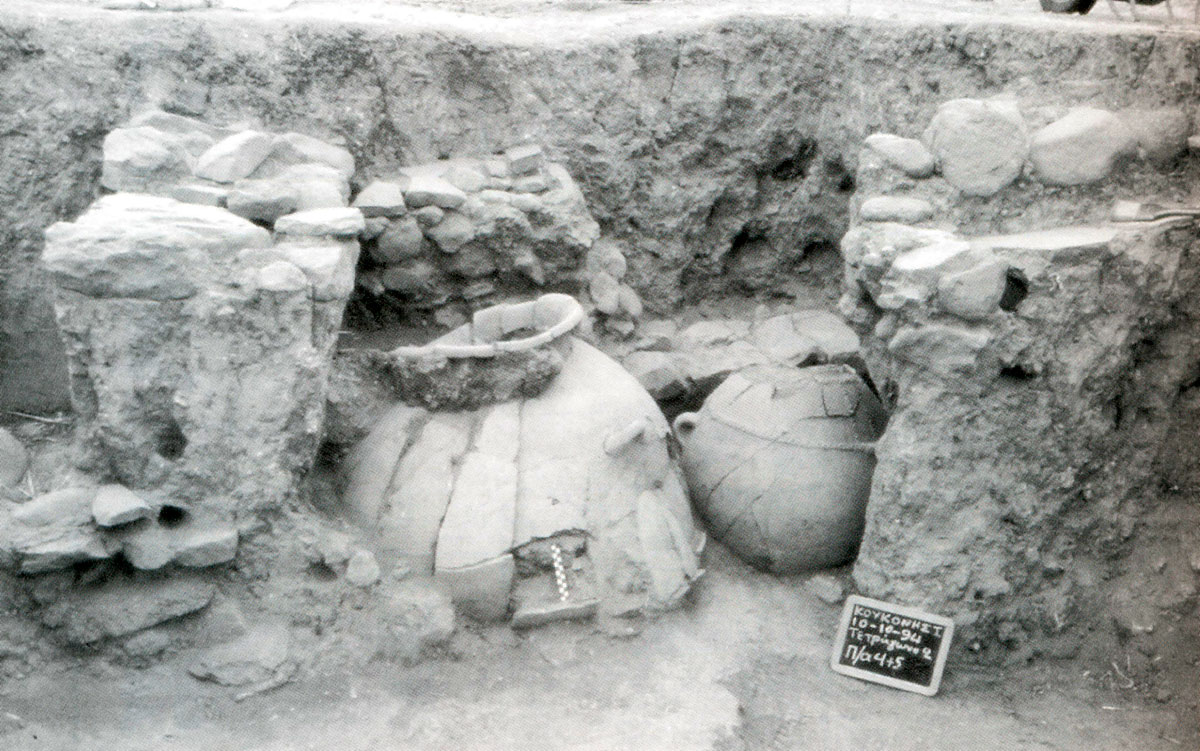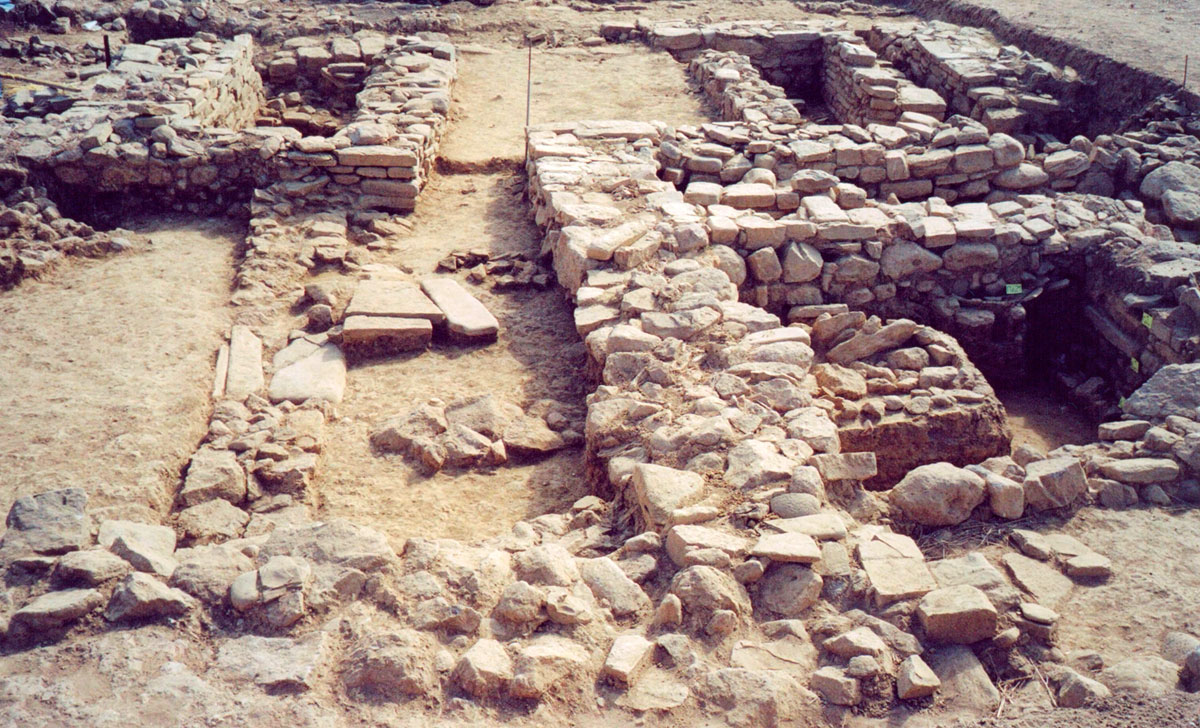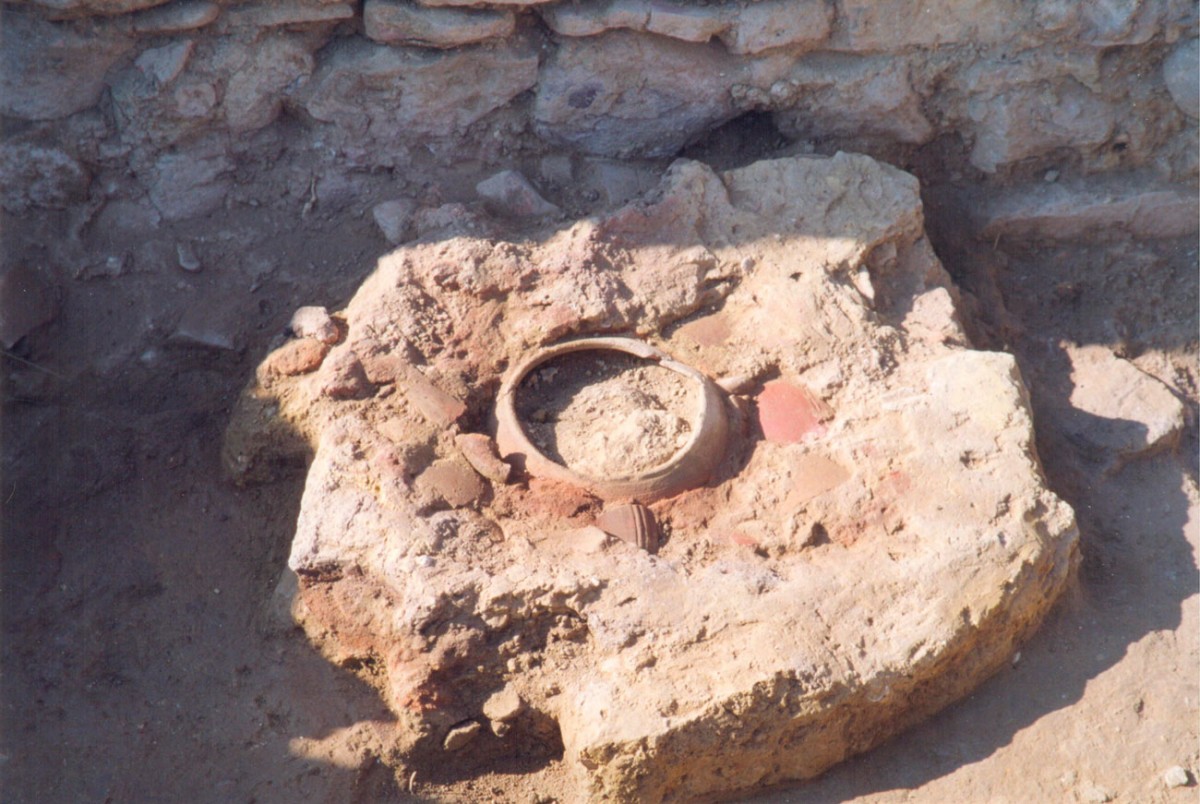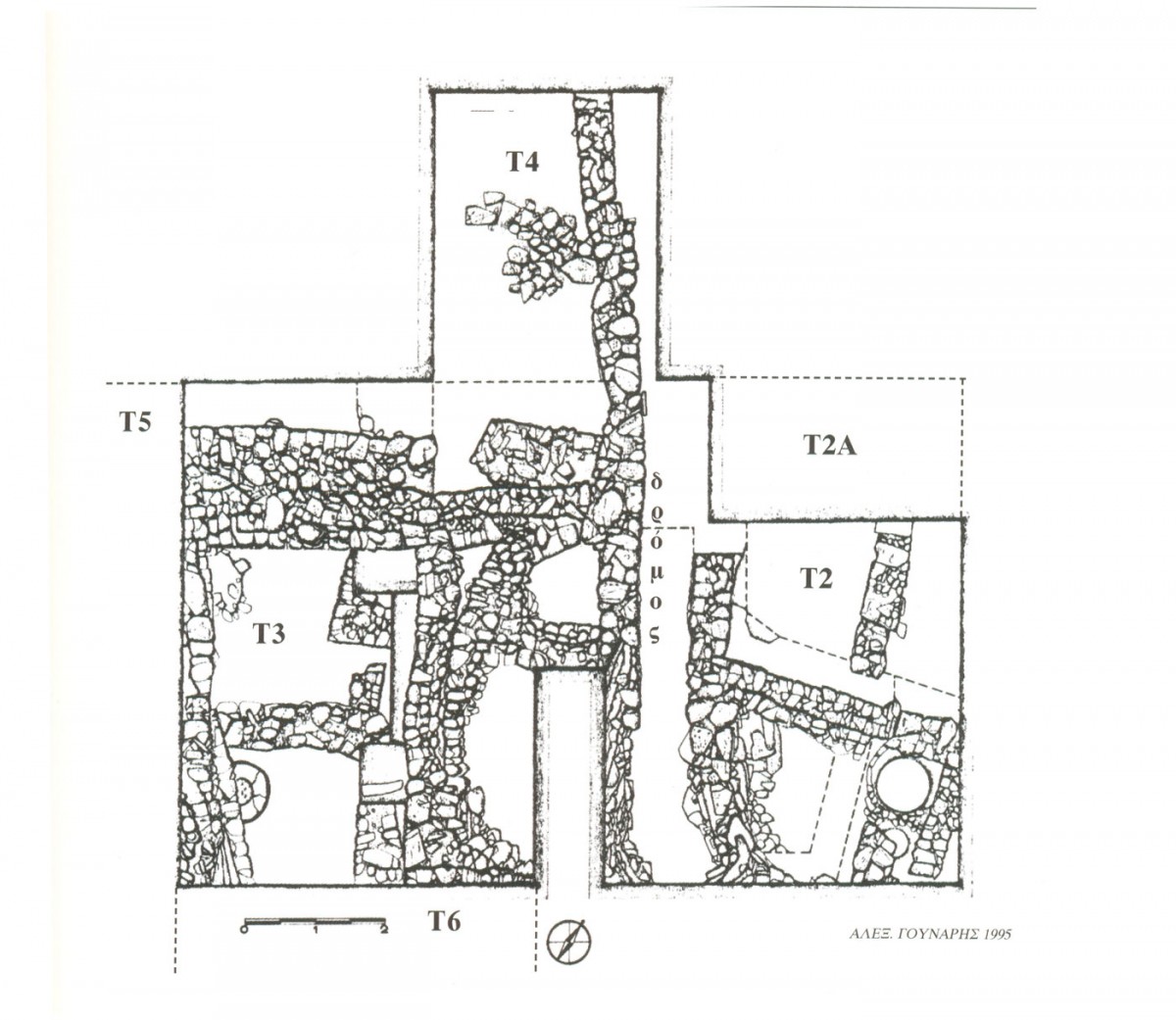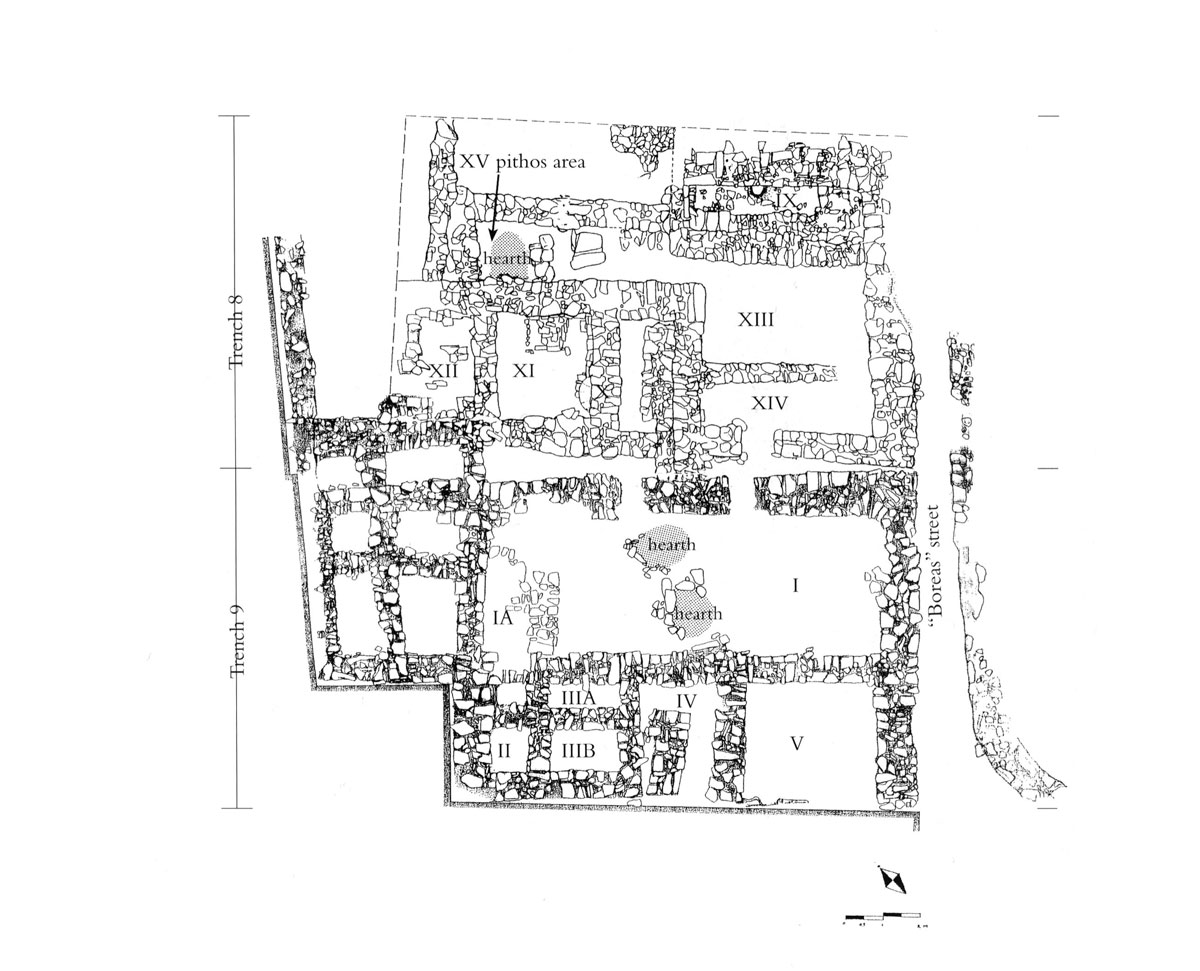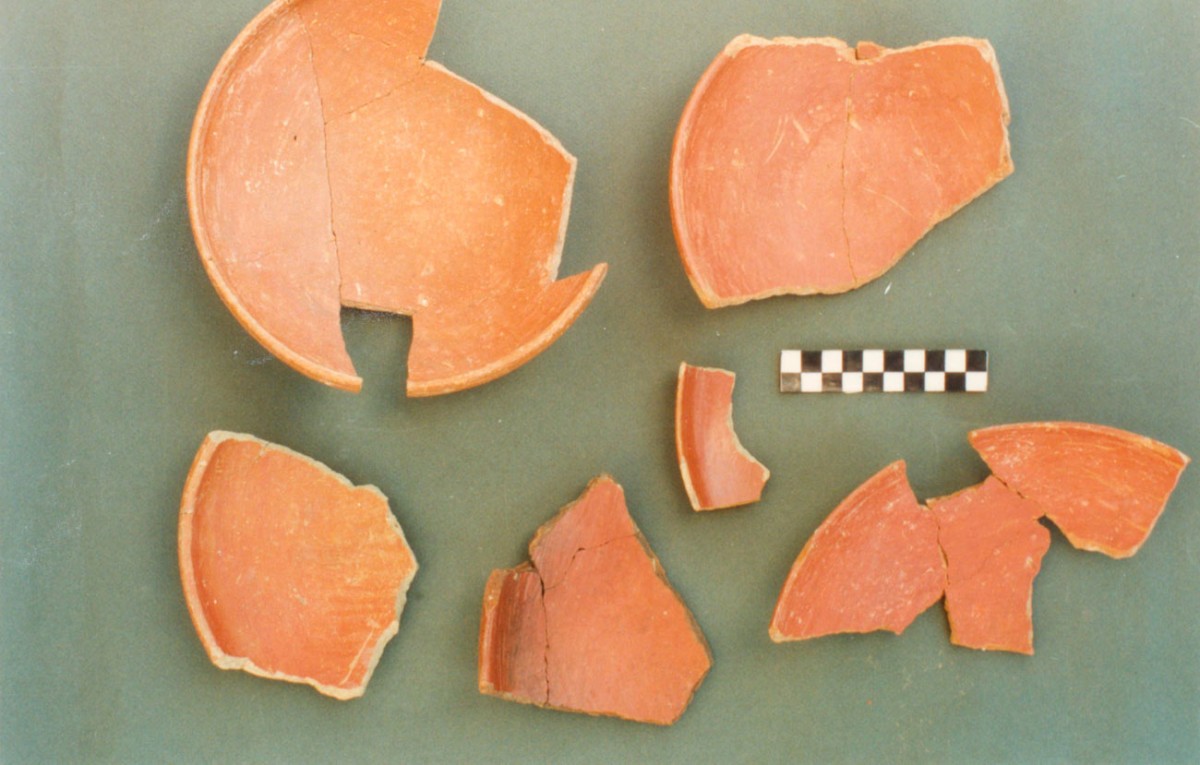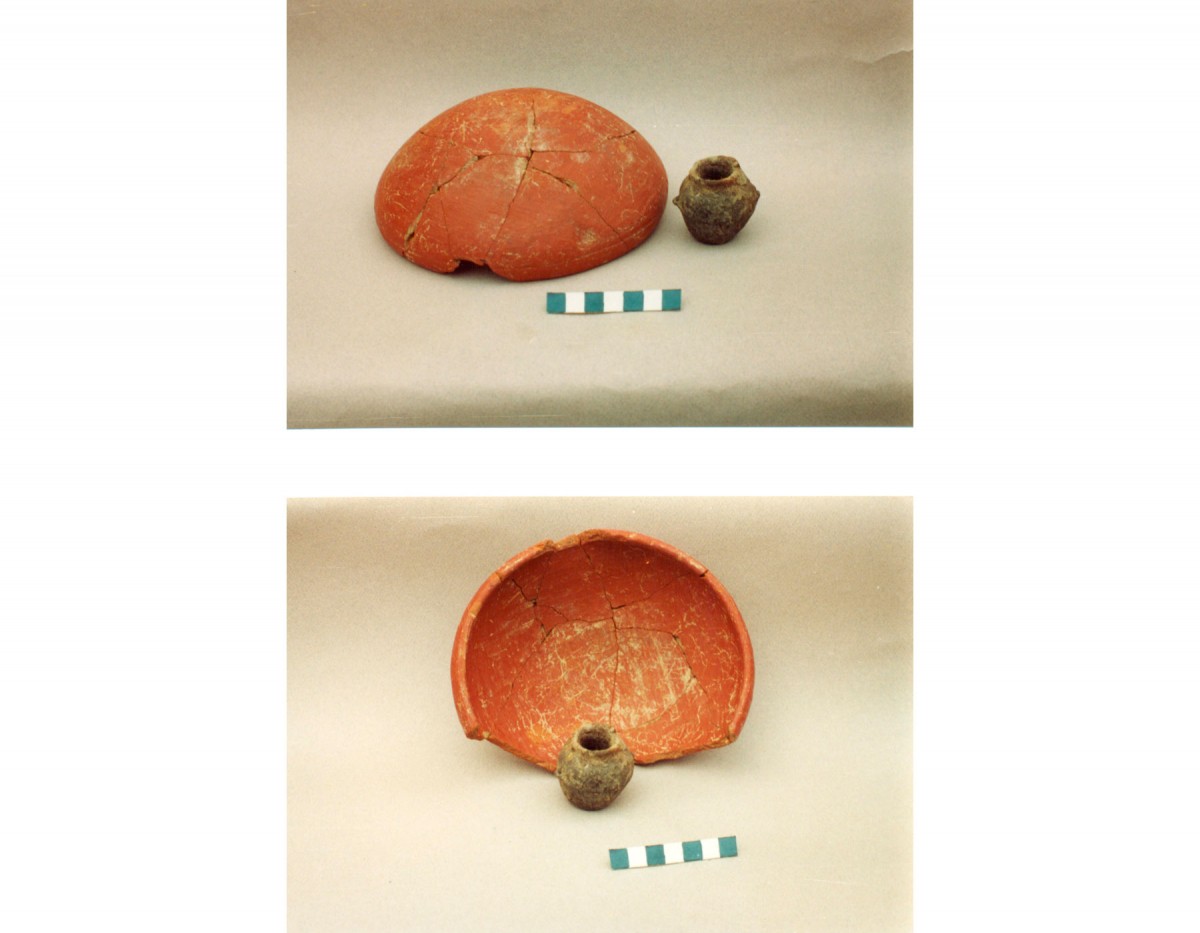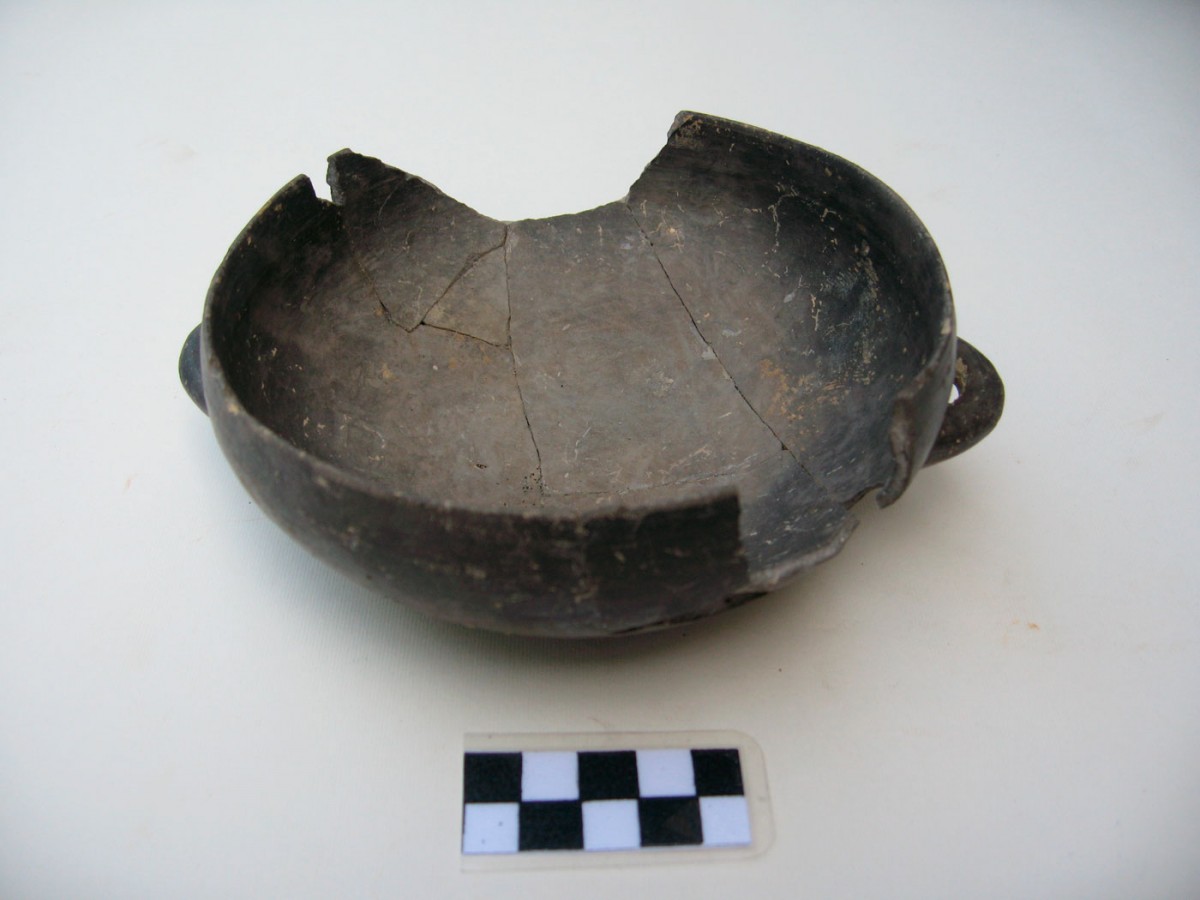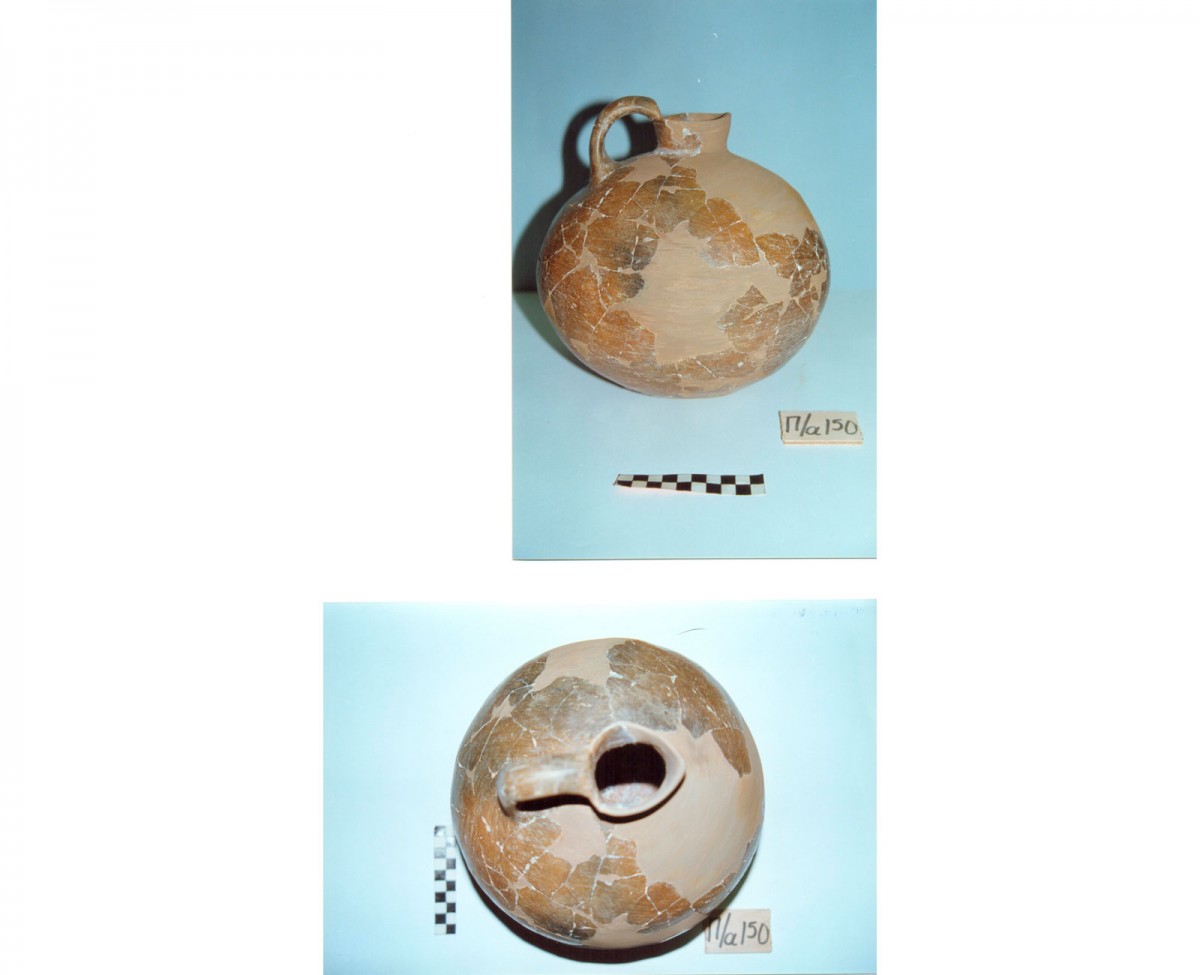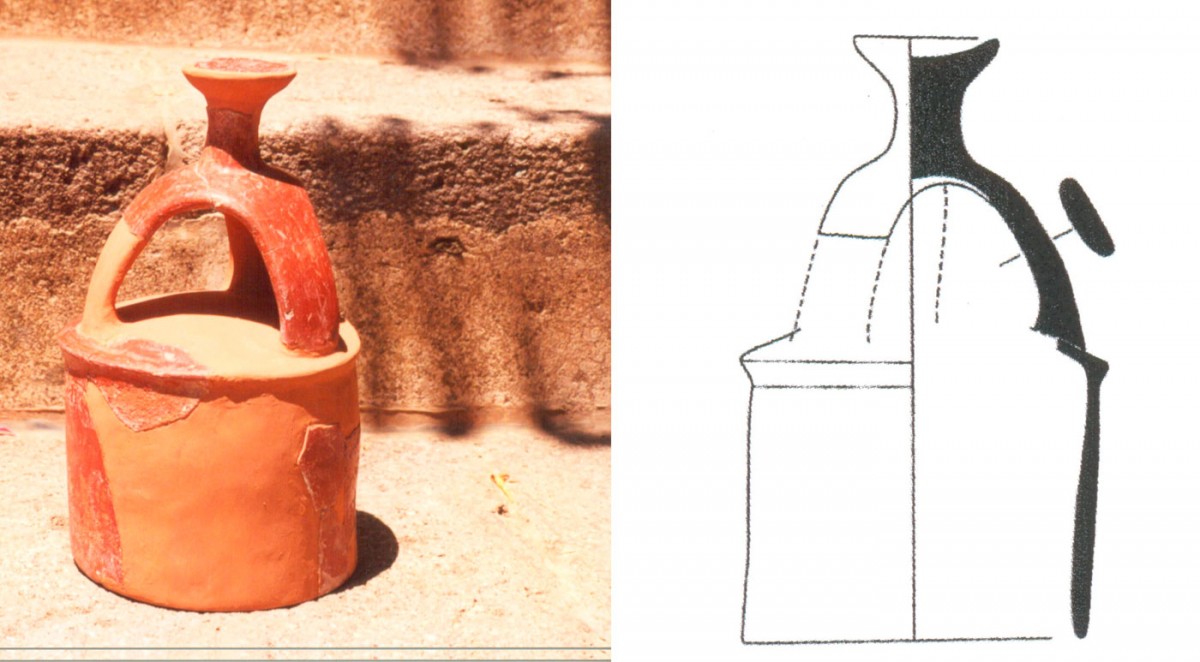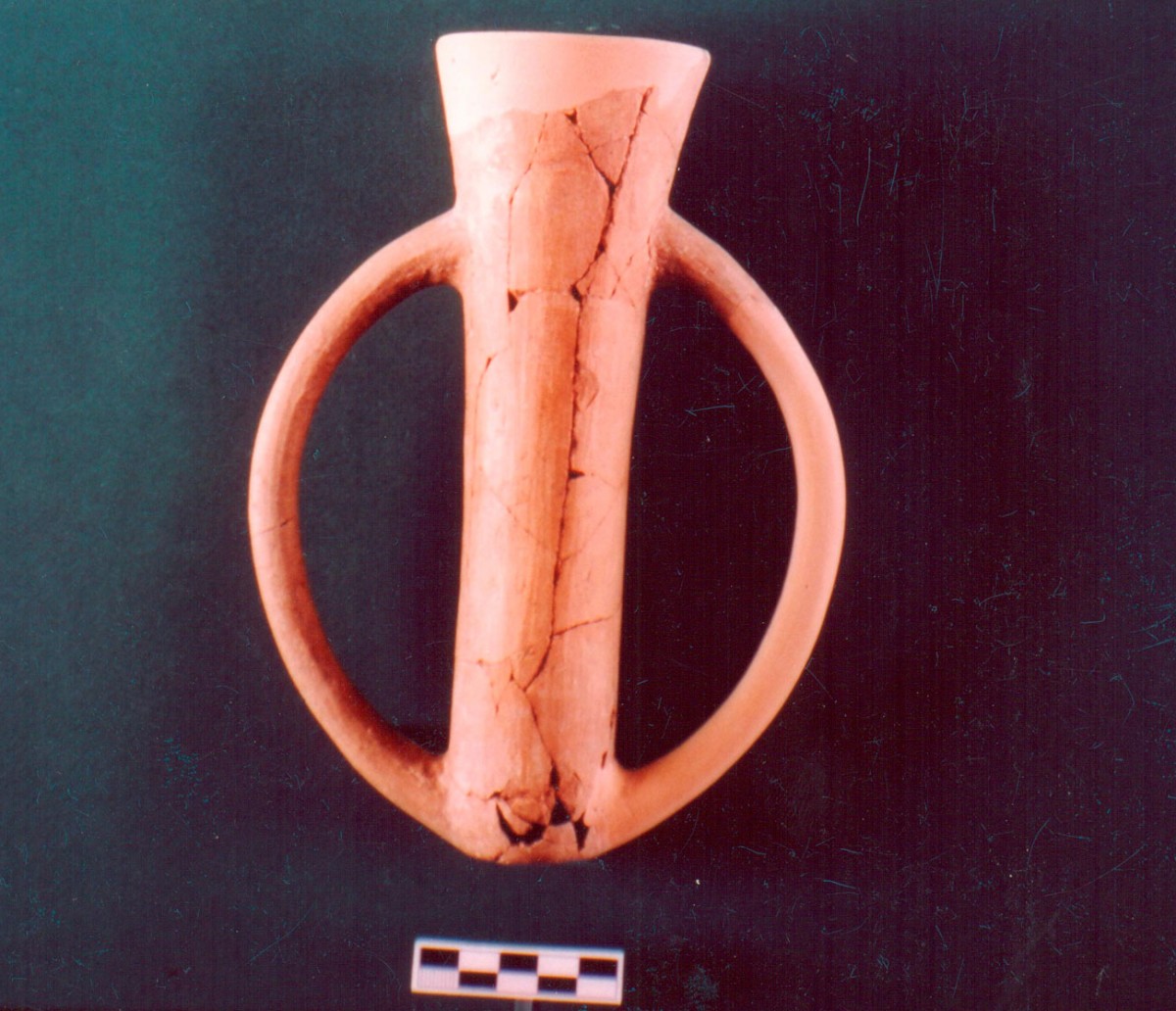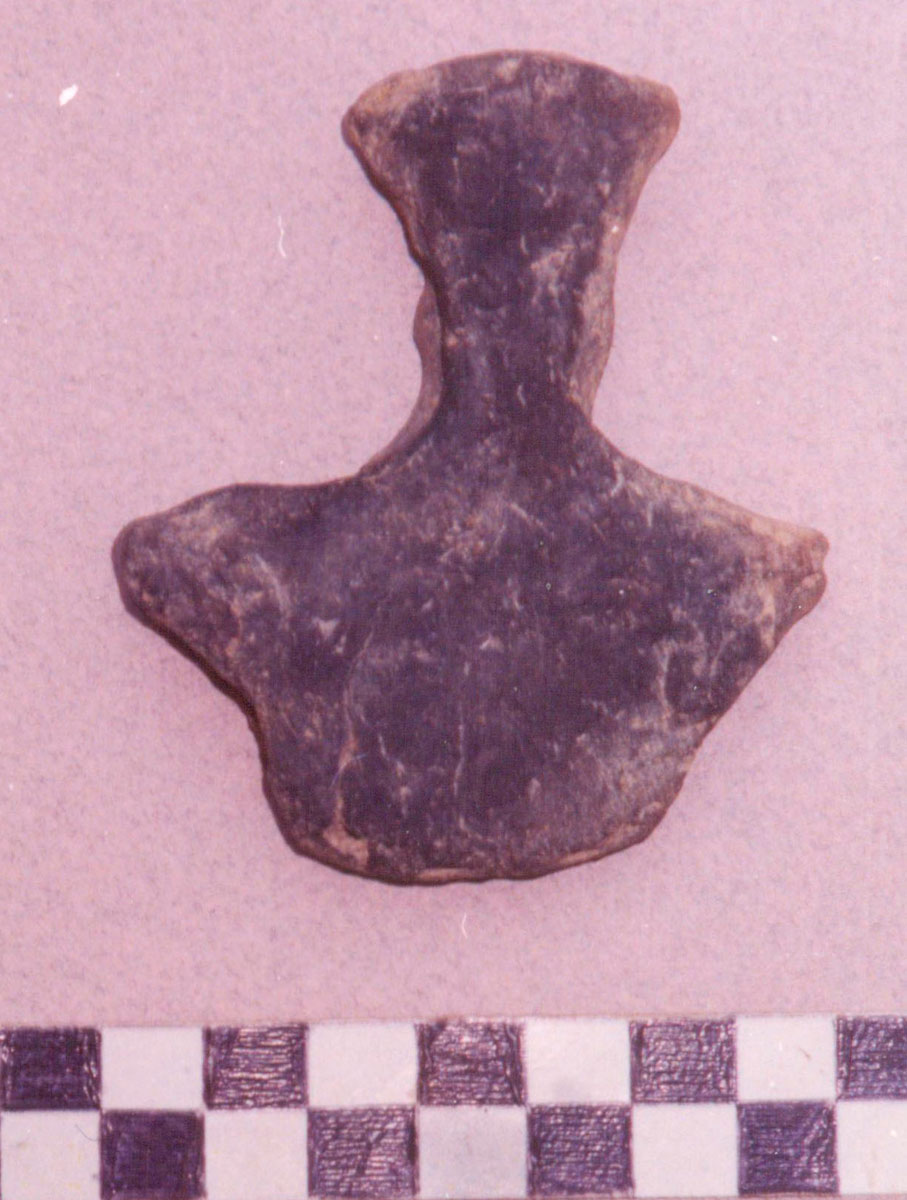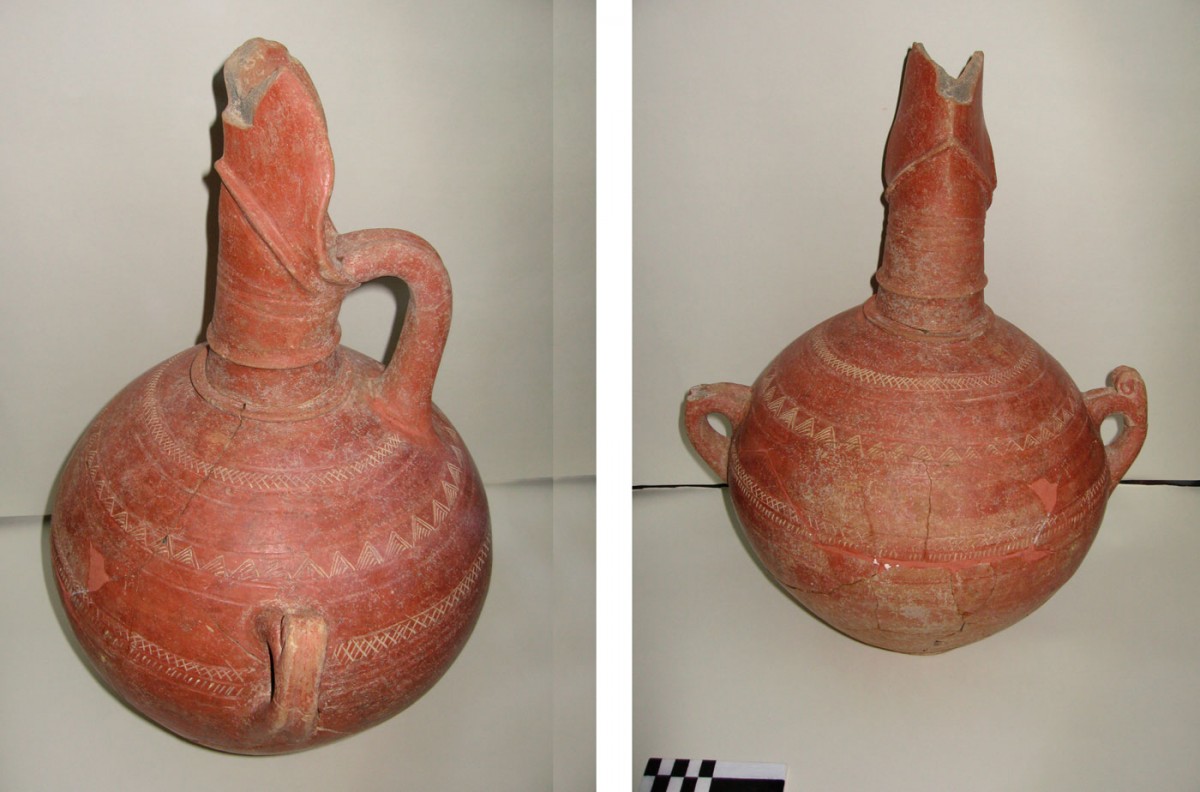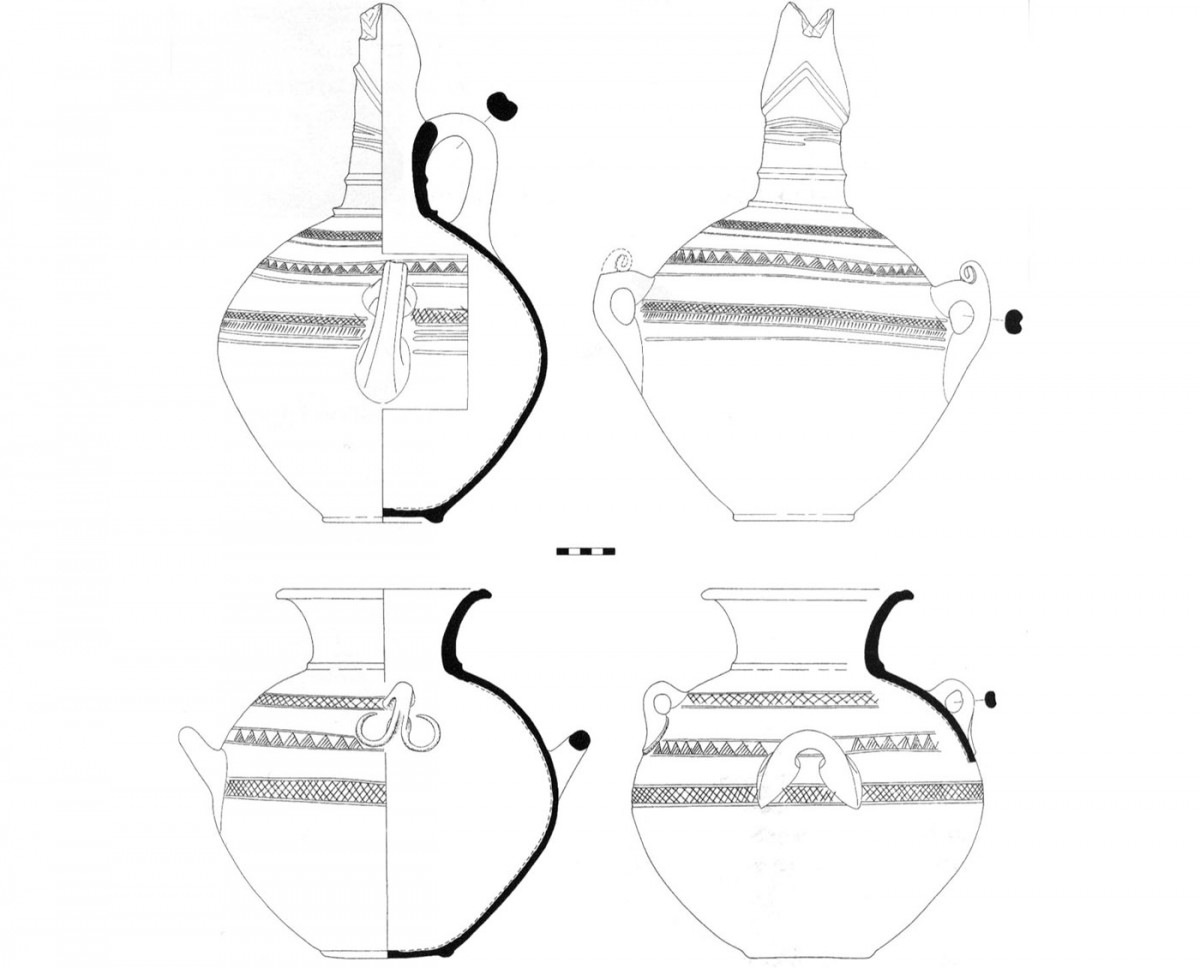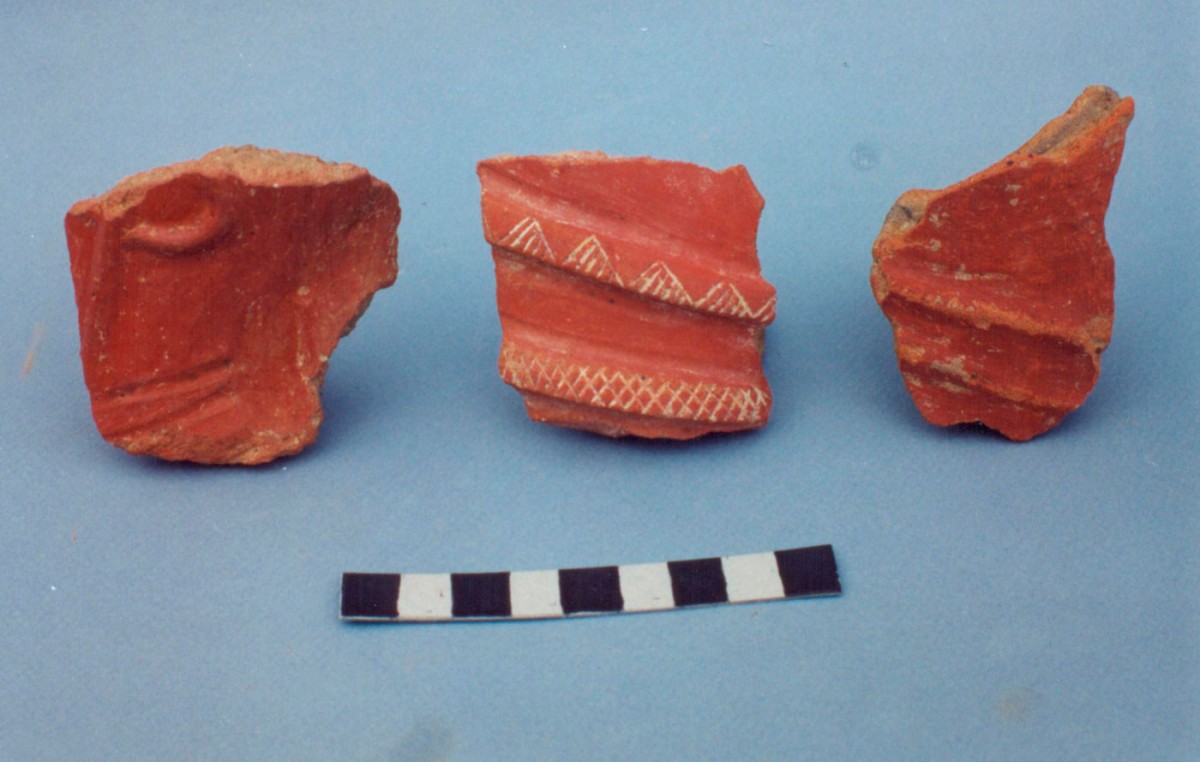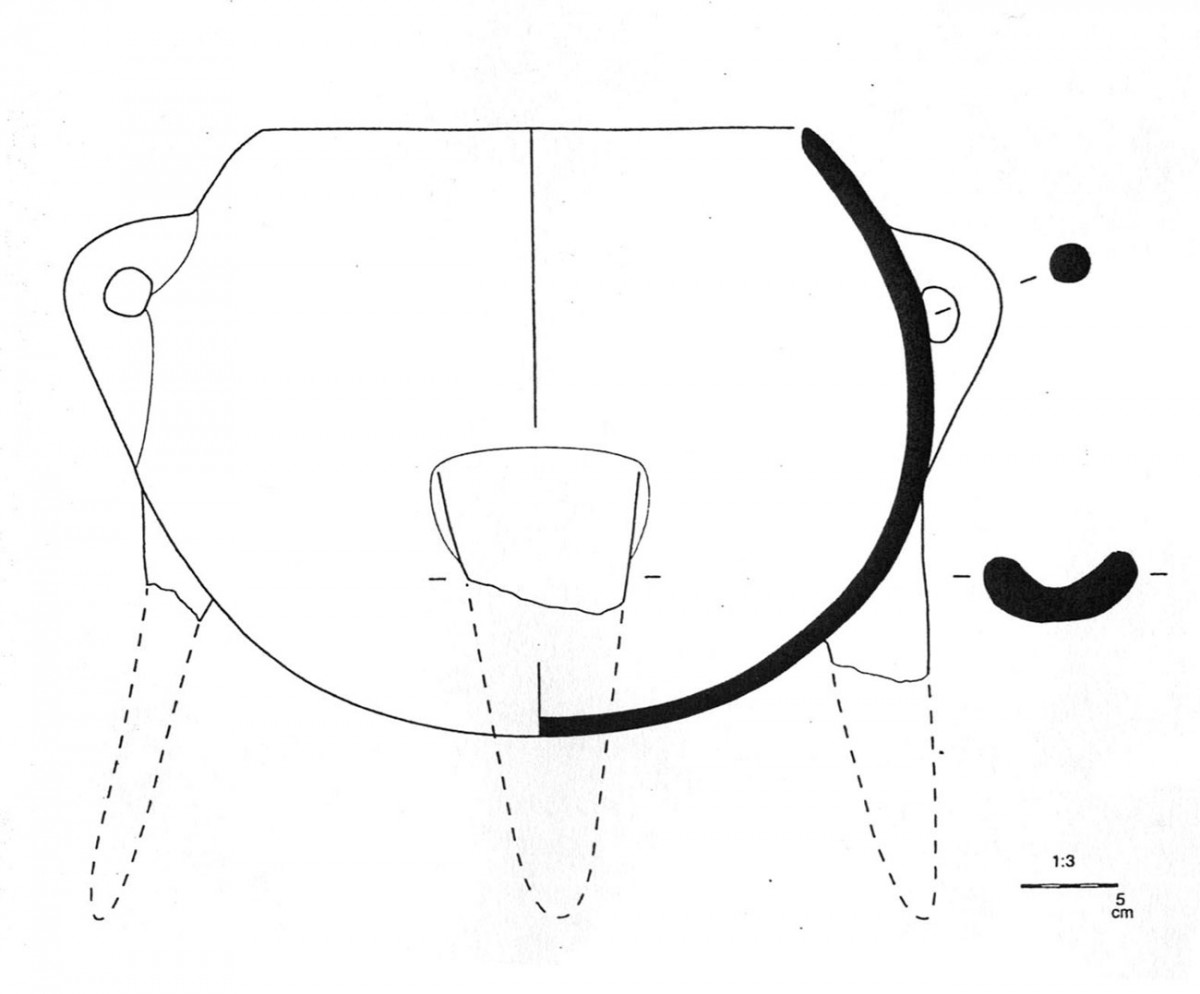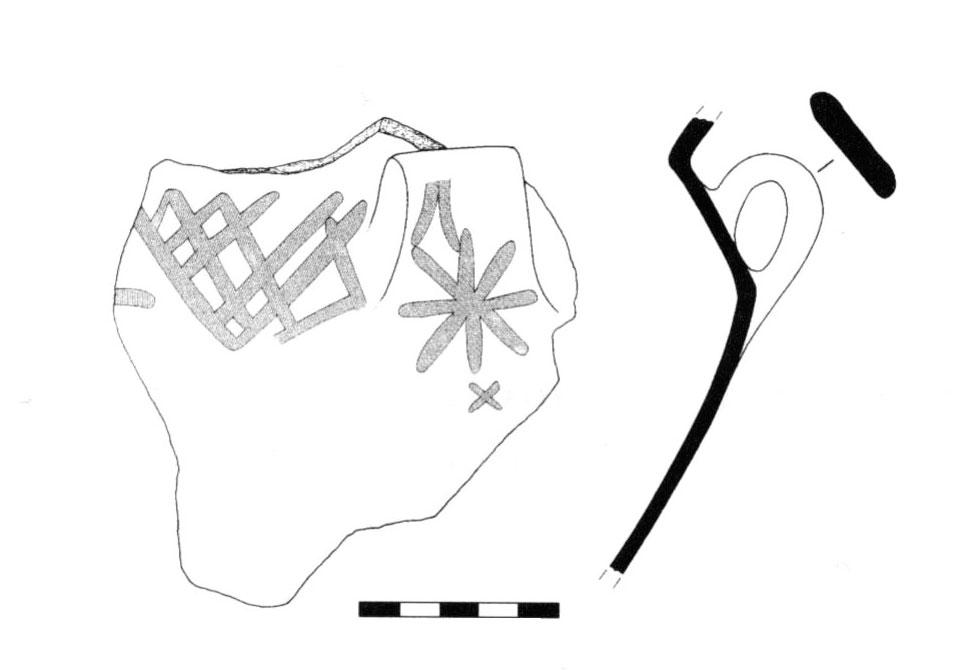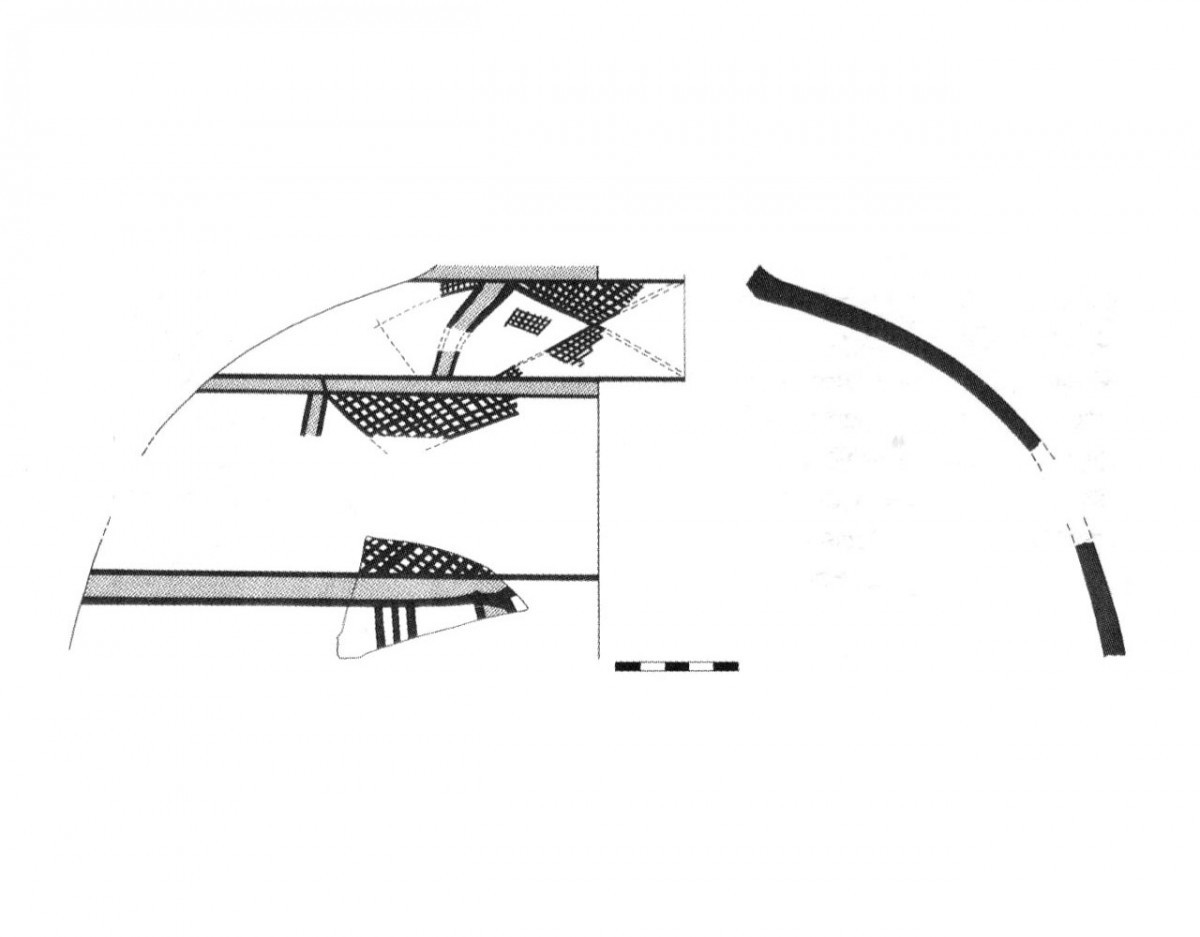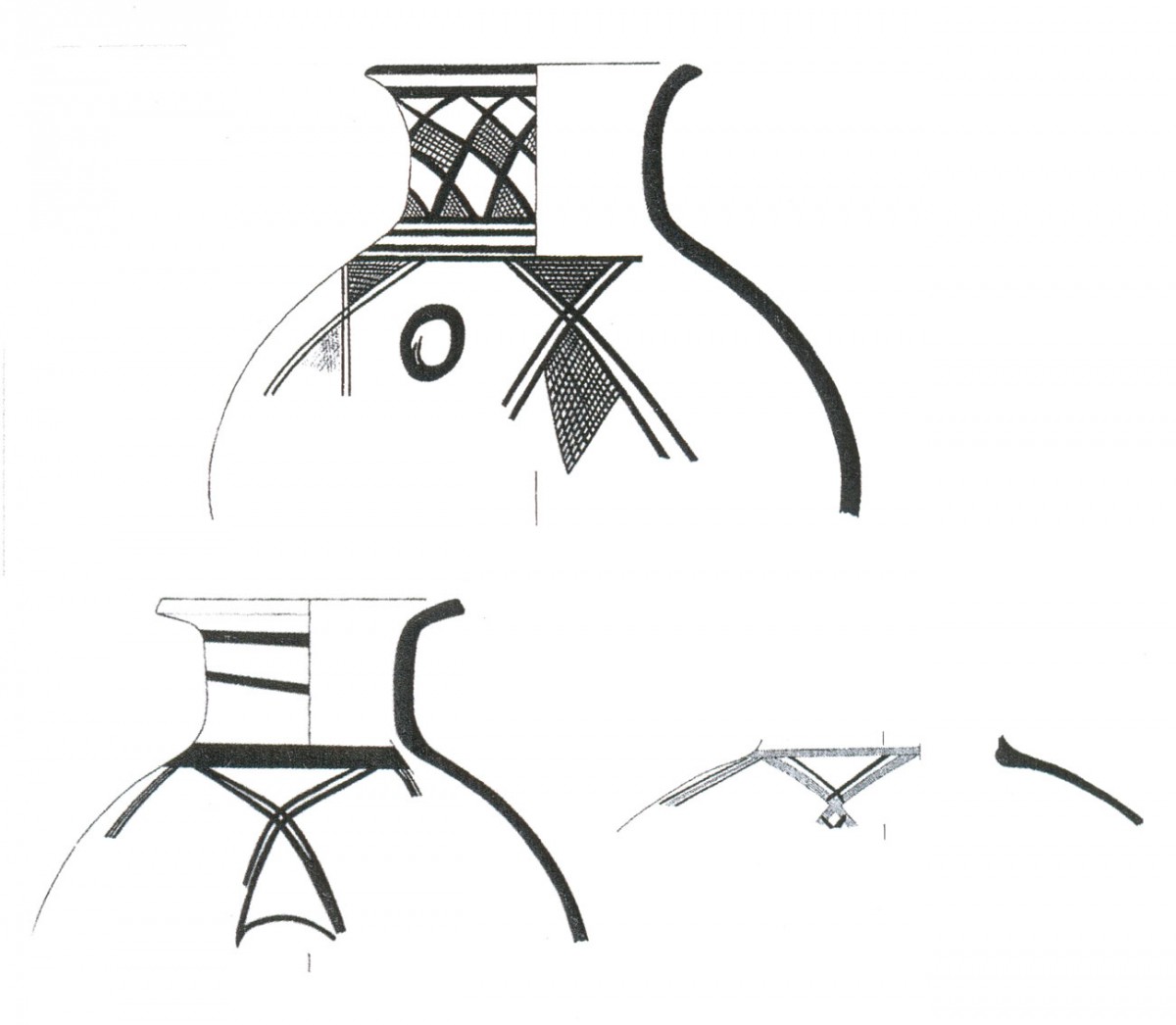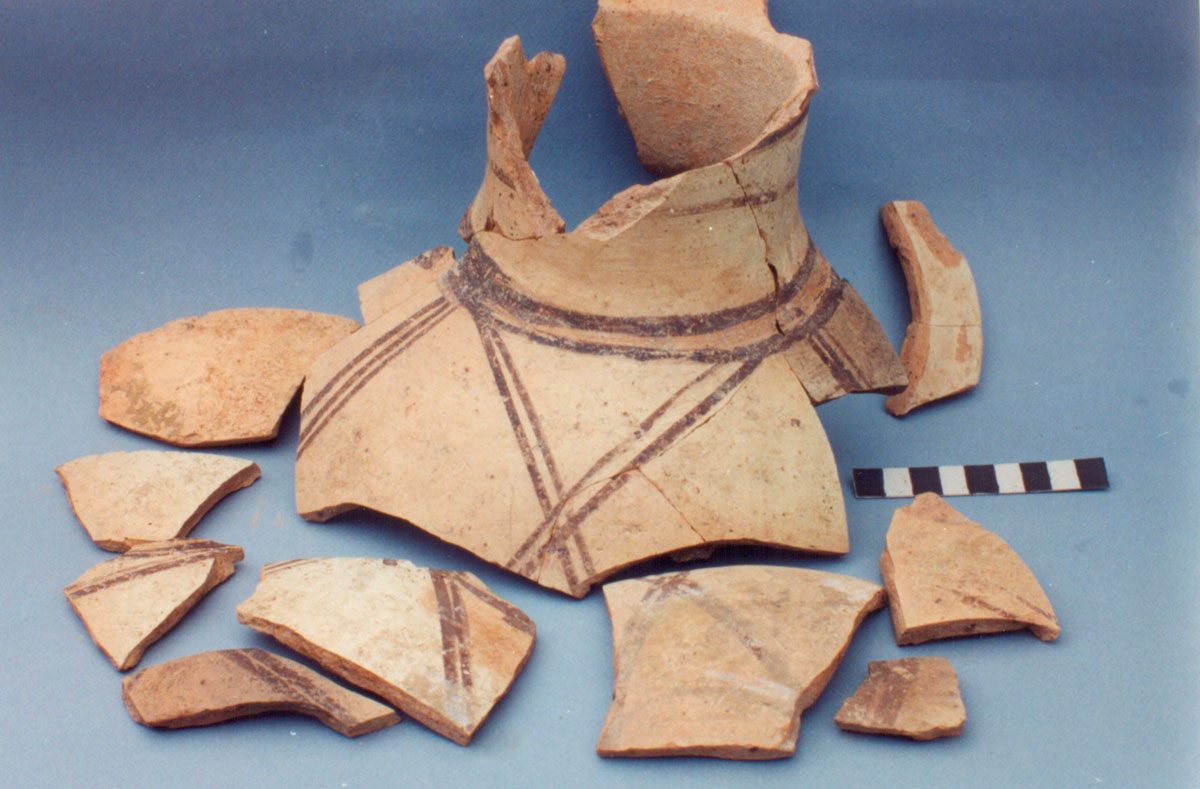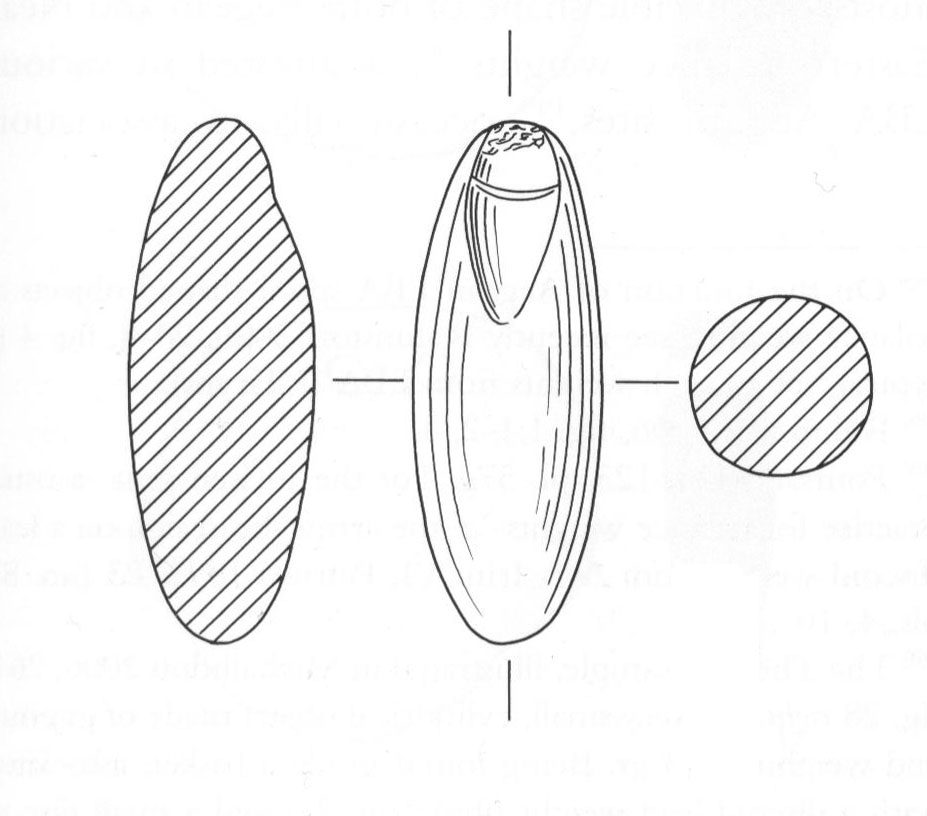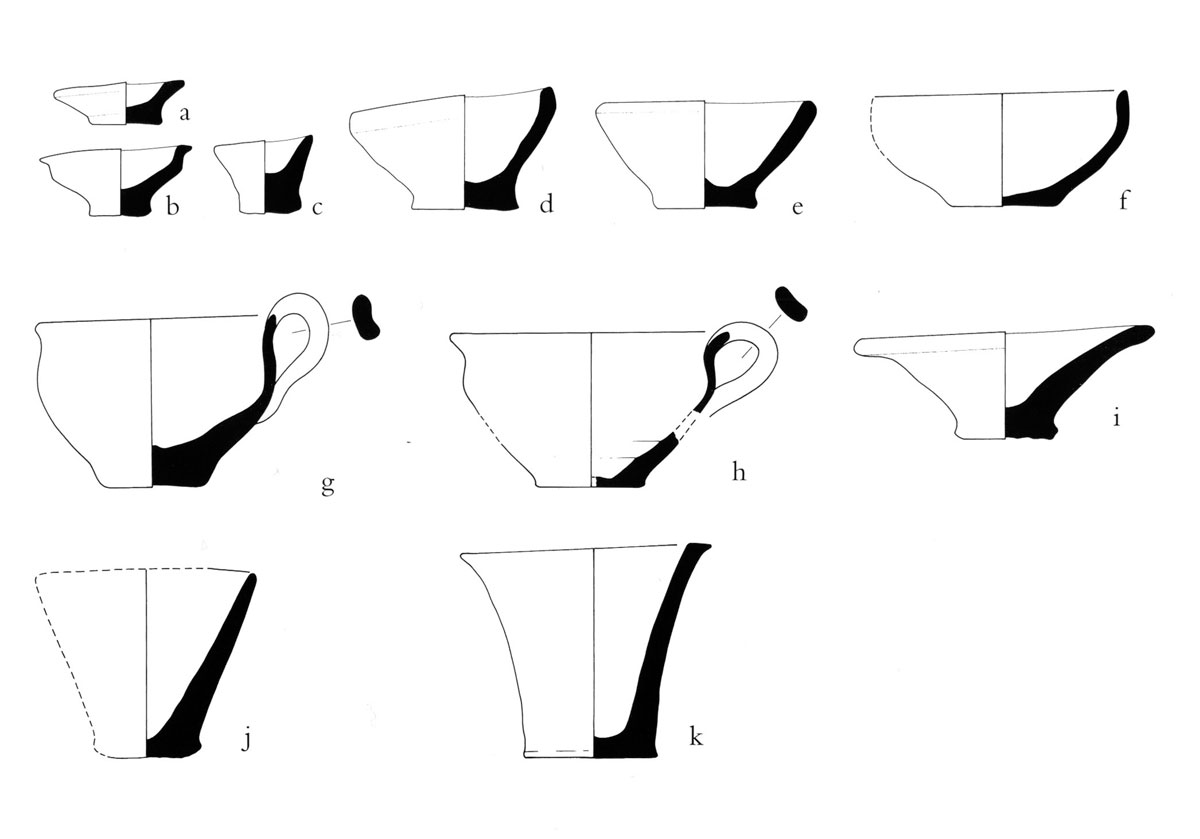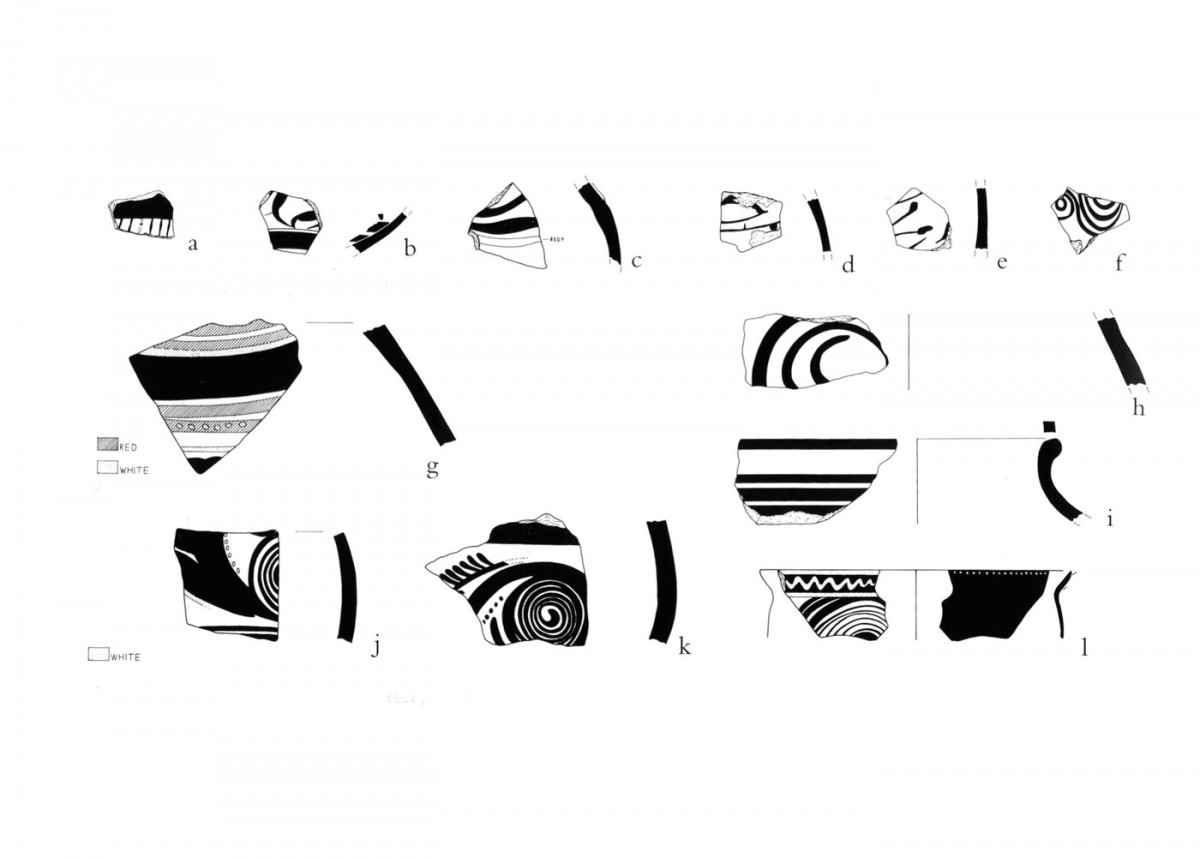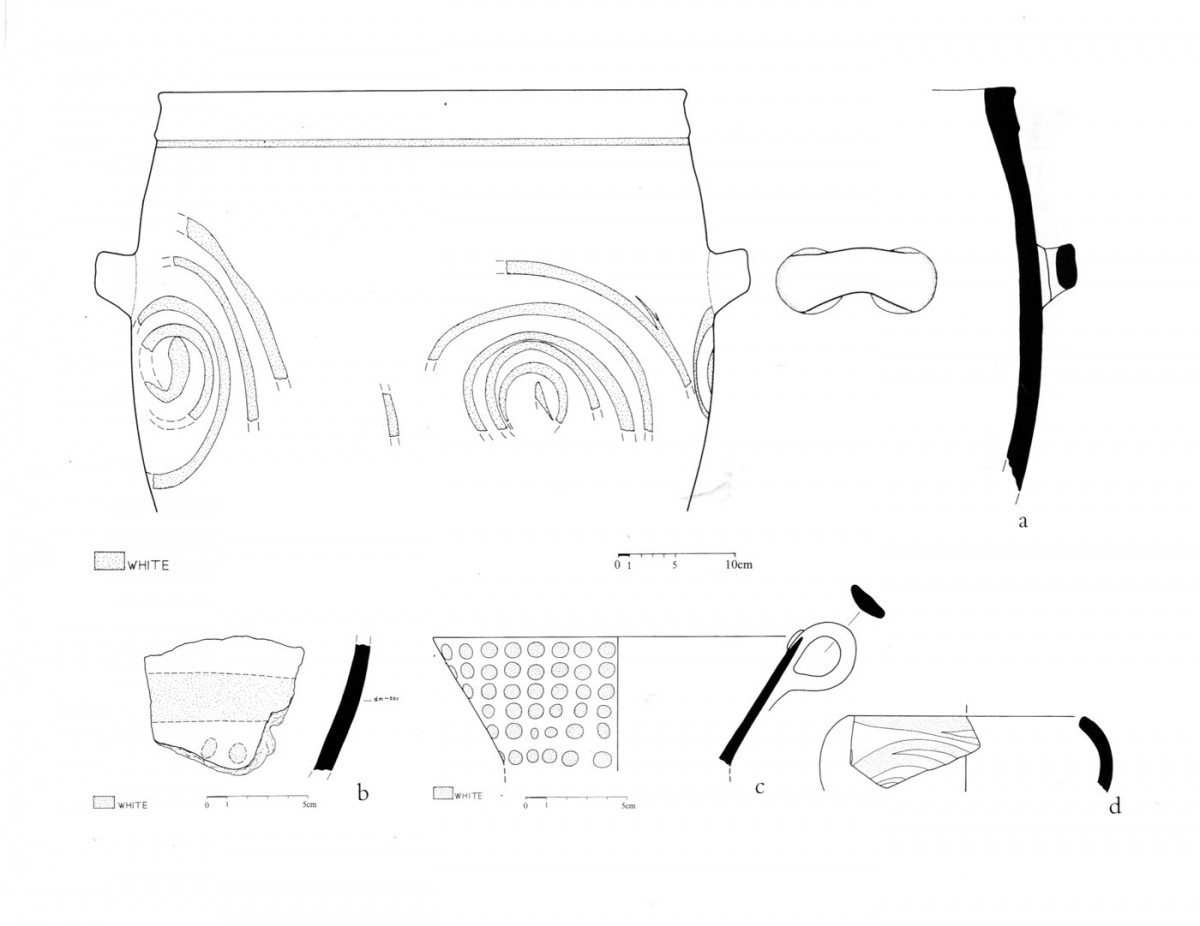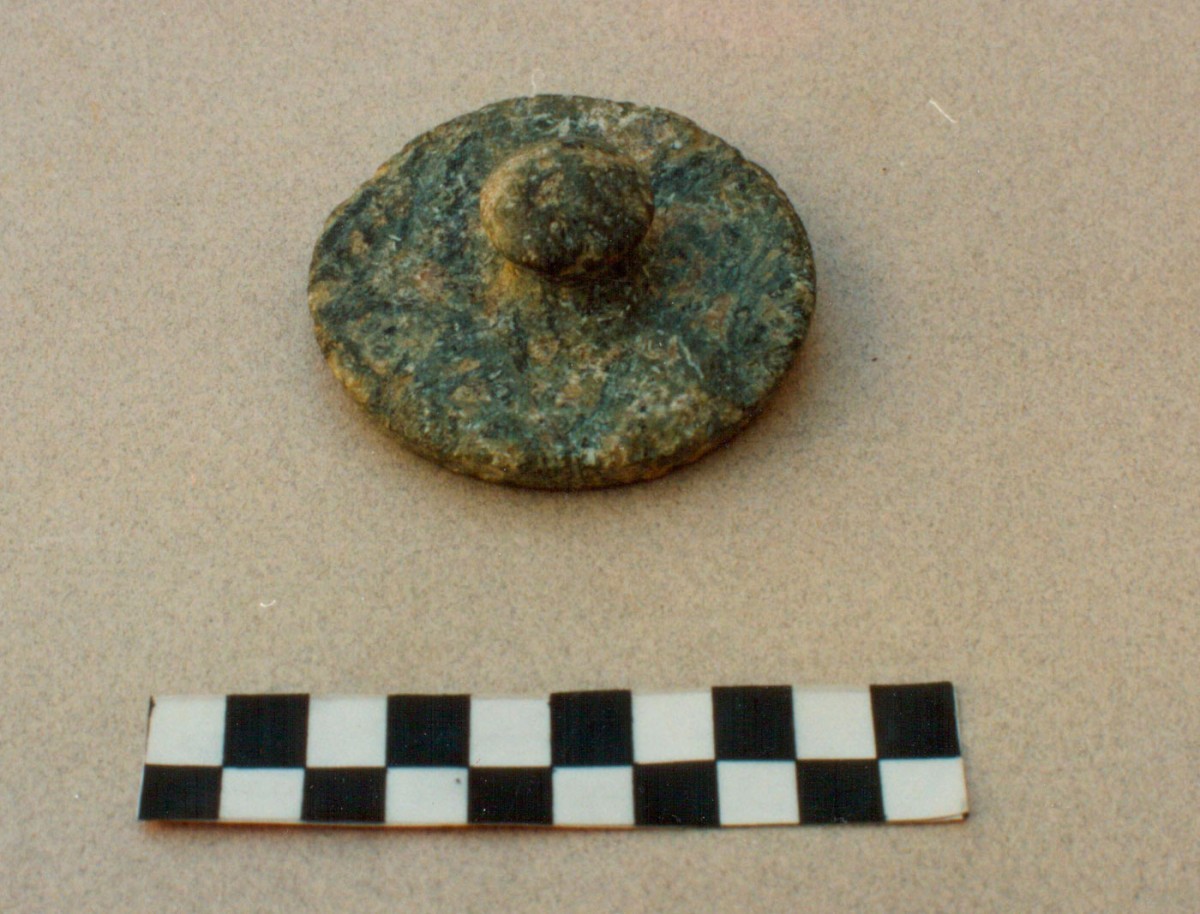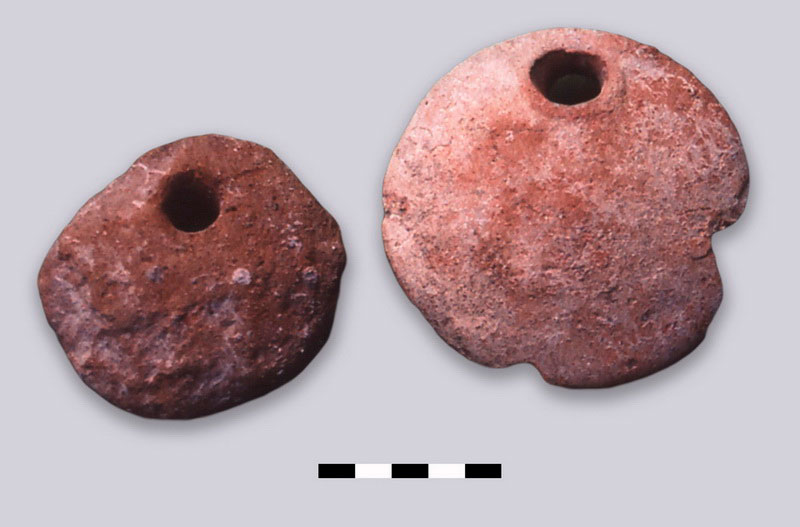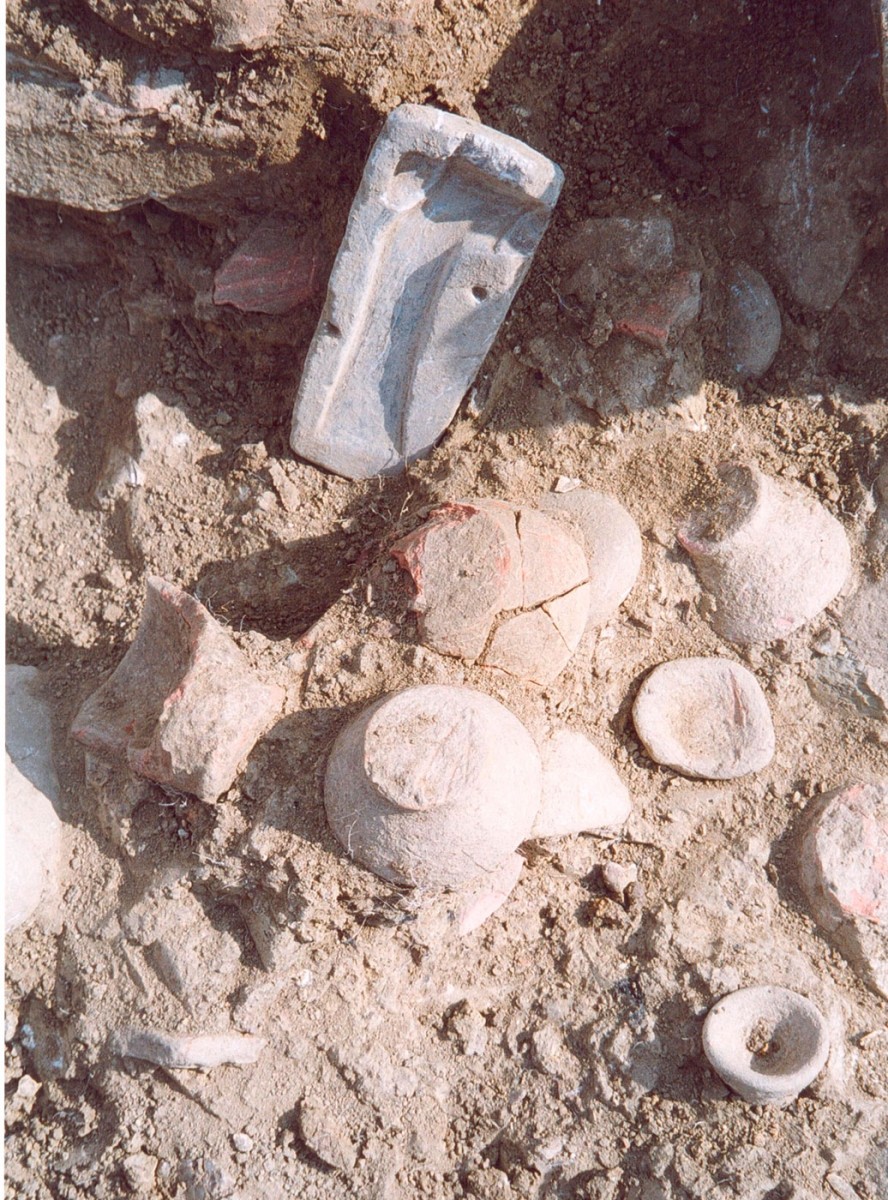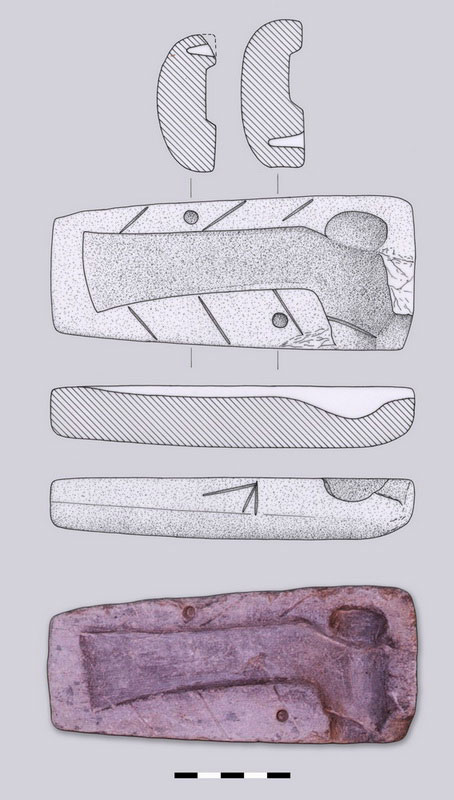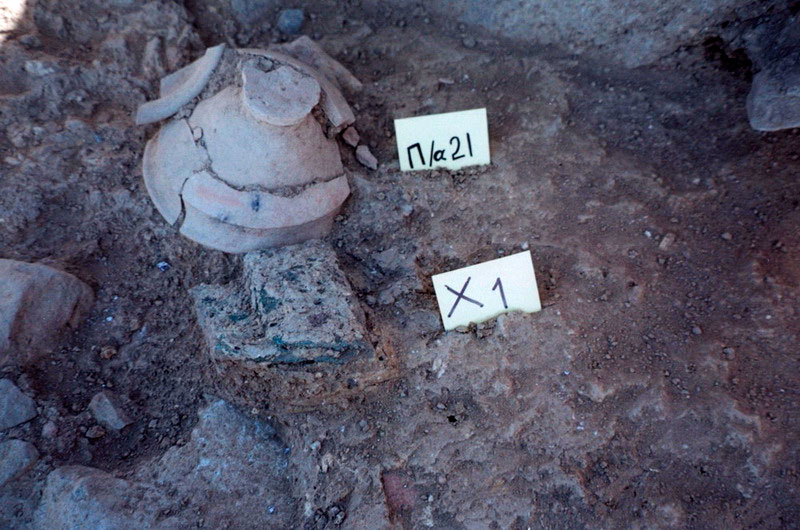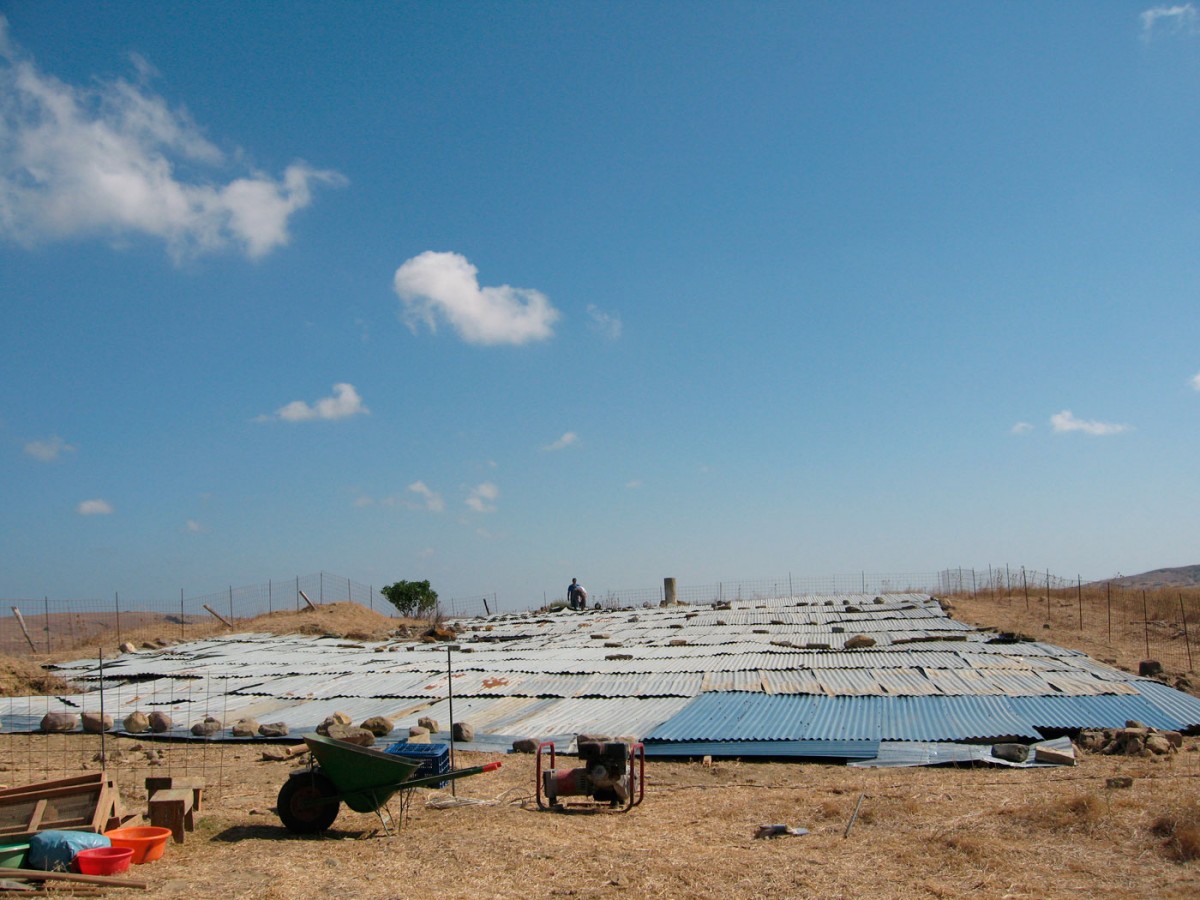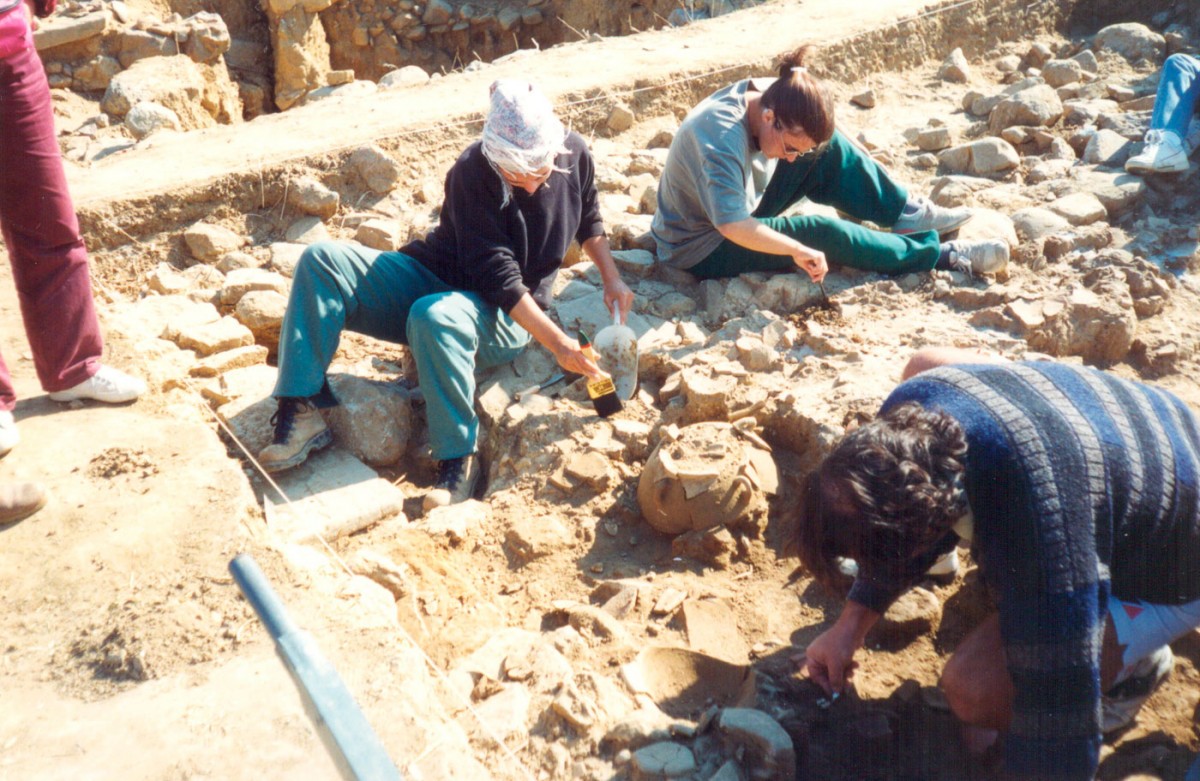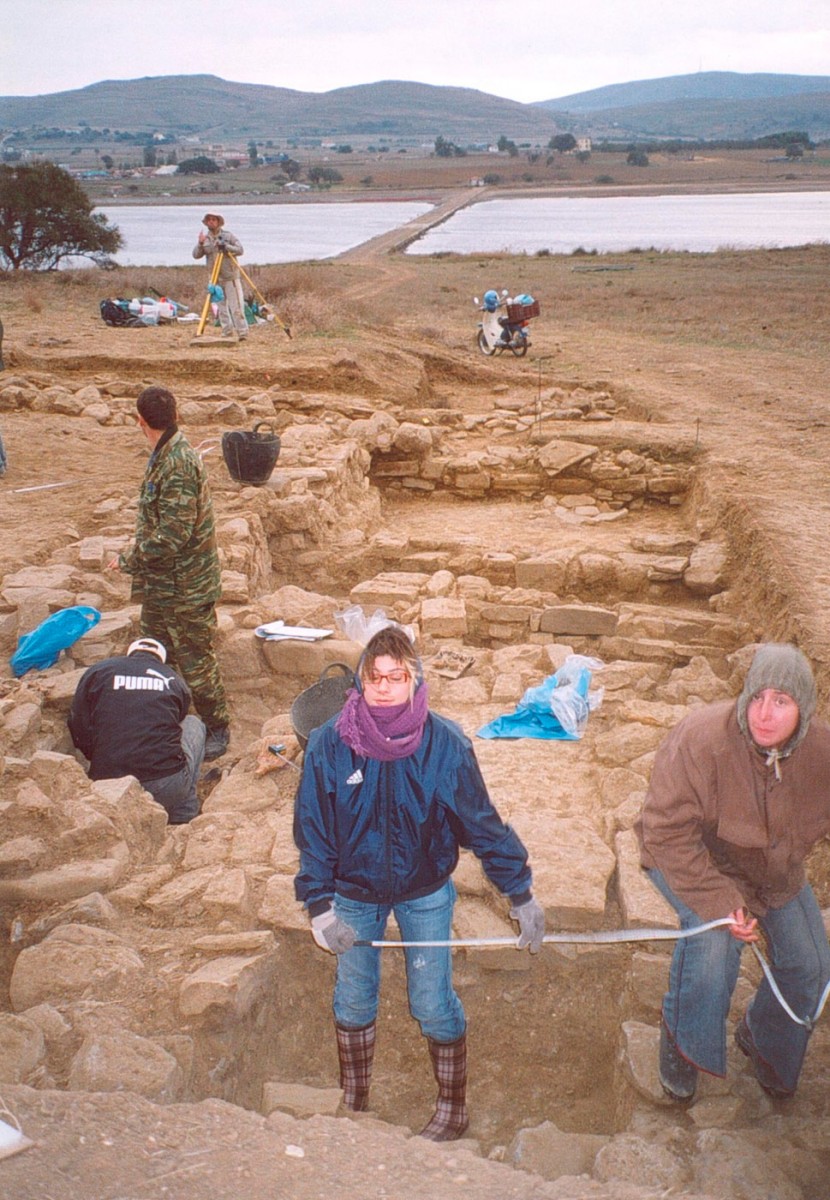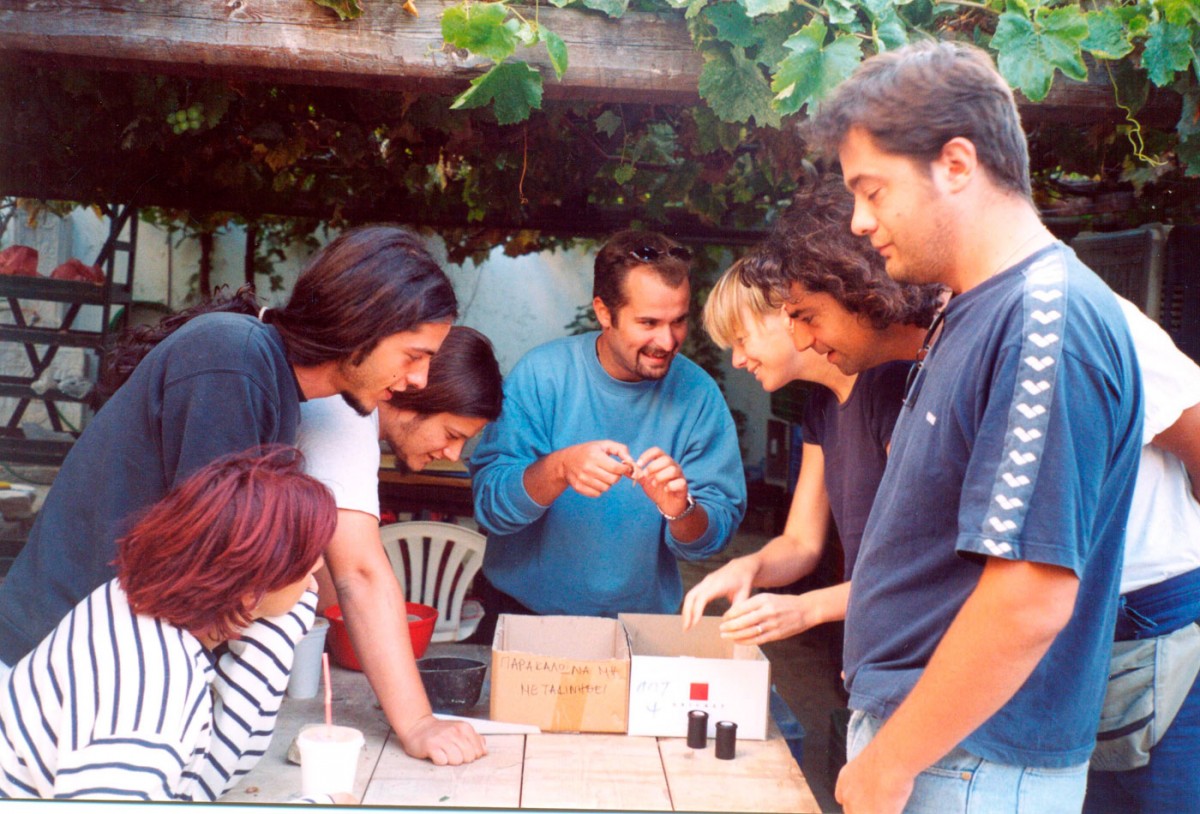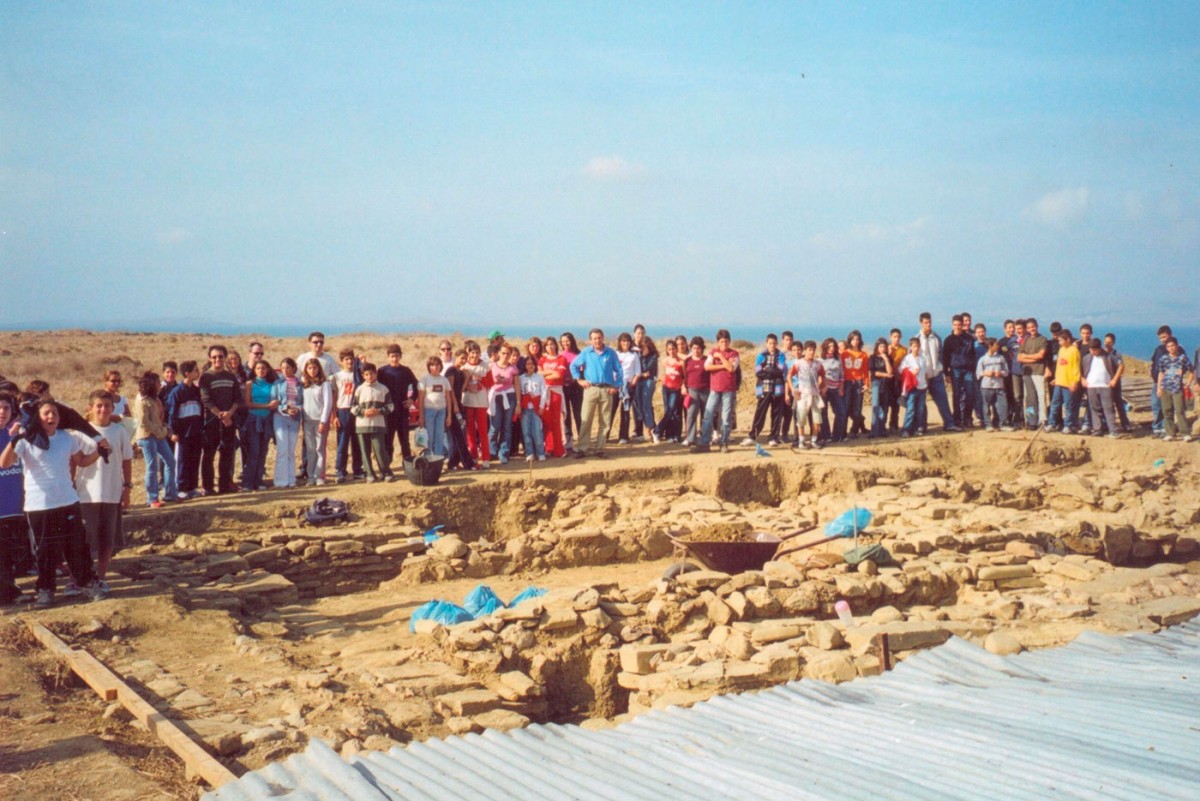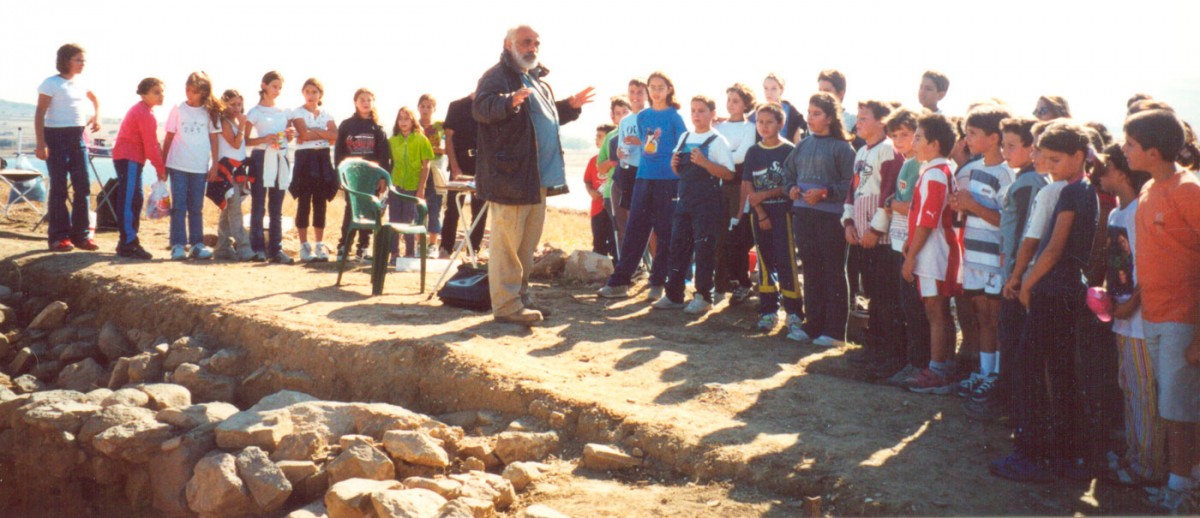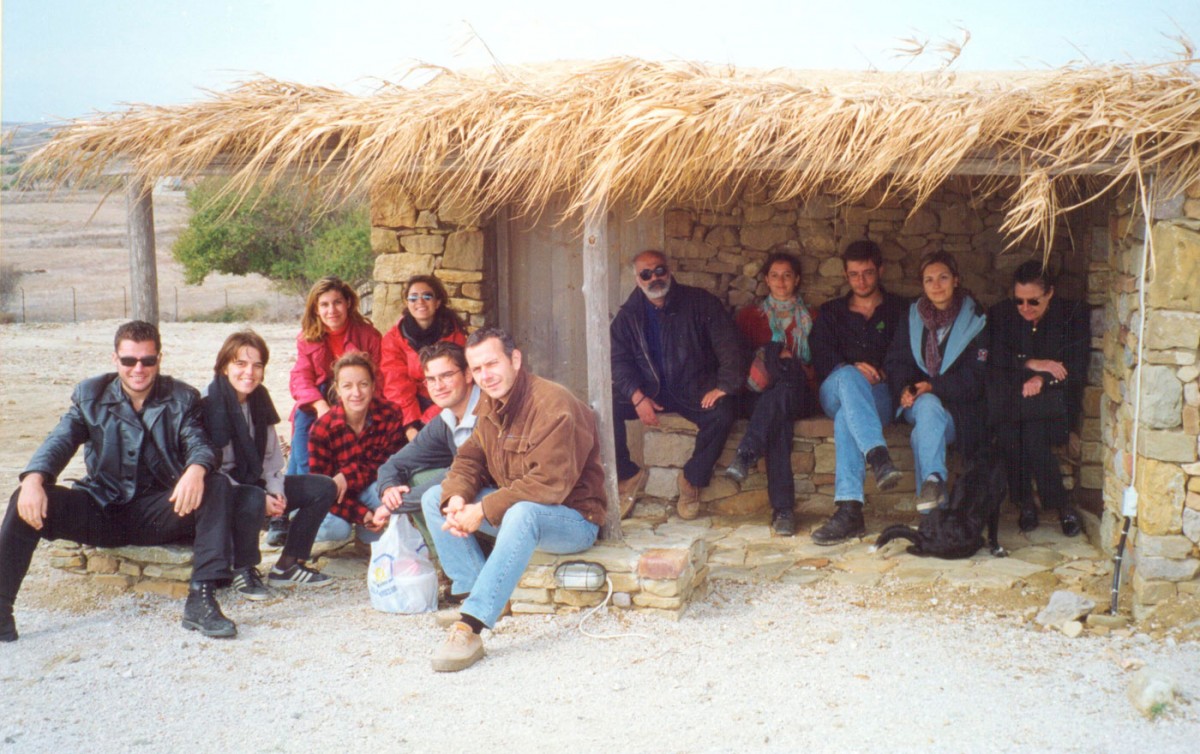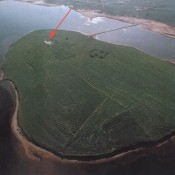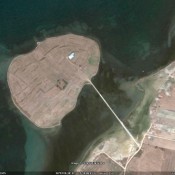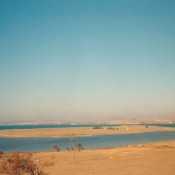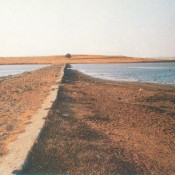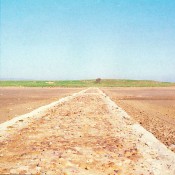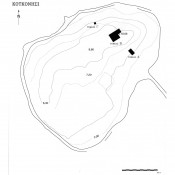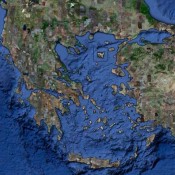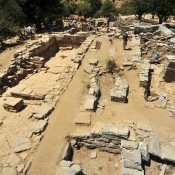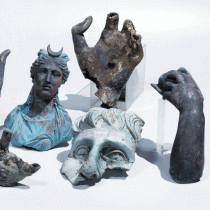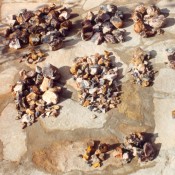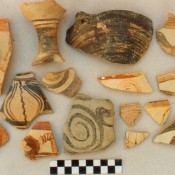In 1992 a new site was added to the archaeological map of the prehistoric Aegean, on the islet Koukonisi (Lemnos); the latter is set in the innermost part of the gulf of Moudros, very close to the modern village that goes by the same name. After a brief survey, in September of that year, a first trial trench (Trench 1) was opened in the lower eastern part of the islet, the short excavation of which was carried out by the author, in collaboration with the 20th (K΄) Ephorate of Prehistoric and Classical Antiquities. Systematic excavations began in 1994 (Trench 2, at the highest north-eastern plateau known as Koukonos) after the excavation had first been included in the Academy of Athens research programmes entitled “Research in the prehistoric settlement of Koukonisi, Lemnos”. Since then systematic excavations have proceeded under the supervision of the author of this article. Increasingly, these excavations have pointed out the archaeological significance of the islet which, being a harbour, i.e. a natural shelter from the elements, flourished and prospered particularly during the Early, Middle and Late Bronze Age for roughly two millennia (3200/3000 BC-12th century BC), with plentiful Middle Helladic, Minoan and then Mycenaean finds, while scattered sherds point to its declining habitation at least up to the Geometric and Archaic period.
After the first trial trench in 1992, the plentiful finds from different prehistoric periods (pottery, spindle whorls, stone and bone tools, millstones etc.) strewn thickly on the ground of the Koukonos plateau led to its choice for systematic research. On the other hand we were convinced that the entire plateau –the highest level on the islet– had been artificially formed by continuous habitation for almost 2000 years, which left behind successive architectural phases. Scattered building material, coming to light from the ploughing of the fields, was promising evidence of a fruitful excavation on Koukonos. Already, by 1994 our expectations had been confirmed by the research conducted there.
The successive architectural phases detected, the excellent preservation of building remnants, mainly of the Middle Bronze Age (2000/1900 BC-17th century BC), the isolated areas sealed after earthquakes, at different periods of time, the abundance of pottery (either local or imported) and all sorts of artefacts, offer as a whole sound information about everyday life and activities in the prehistoric settlement of Koukonisi, its connection with other Lemnian sites as well as its presence and role in the Aegean area.
From the very beginning it became obvious that the higher levels of habitation had been damaged not only by centuries of tillage but also by the fact that Koukonisi traditionally served as a convenient “open quarry”, offering cheap and abundant building material to the inhabitants of Moudros for their houses and barns. A building of this kind, standing roughly in the centre of the eastern part of the island, with a large dry stone wall, as well as a stone-lined well, is built entirely out of material coming from the prehistoric settlement.
During the 1994 excavation, another cause of the damage done to the layers of the early Late and Middle Bronze Age became evident in Trench 2. This partial disruption was due to the opening of a zigzag trench by the Allies during the First World War when the Allied Fleet had anchored, as we will see below, in the gulf of Moudros. A long sheet of corrugated iron, serving as the roof of the trench, a quantity of wine bottles, each with its foreign label on it (some of them originated from Indochina), buckles from soldiers’ belts, cartridges, a construction made of local, solid bricks and other finds, all detected at a certain depth of the trench bear witness to the violation of the area’s stratigraphy by the troops that encamped there, bringing us evidence of the “archaeology” of contemporary military history.
The prosperity of Koukonisi is due not only to its privileged geographical location, its geophysical attributes and the geomorphology of the Moudros district, distinguished by extensive fertile plains and pastures, but also to the crucial geostrategic position that the island of Lemnos holds in the northeast Aegean. The latter, near the entrance to the Dardanelles and opposite Troy, lies at an equal distance between the legendary city of Homer’s epic poem and Mount Athos. The islet’s key position led to numerous sites being developed during the Early Bronze Age and since the most important ones were coastal, it became both a crossroad for seaways in all directions and a place of safe anchorage. Another factor contributing to the role played by Lemnos is the island’s uneven and diverse coastline full of creeks and natural harbours open in all directions, the most important being the gulf of Moudros where Koukonisi lies. Thorough oceanographic studies reveal that the wind-induced currents in the region centred around Lemnos, are optimal for shipping all the year round.
The Argonaut and Trojan epic cycles sufficiently underscore the importance of Lemnos as a background of myths concerning real events. When sailing from Iolkos to Colchis, the Argonauts stationed on the island long before entering the Hellespont. From the lovemaking of the then queen of Lemnos Hypsipyle with Jason, two sons would be born, Thoas and Eunios (or Euneos) who was later to succeed his mother to the throne. The united Achaean fleet would also anchor at Lemnos before setting off for the shores of Troy that lay opposite the island, and as Homer tells us, for as long as the siege of Troy lasted, King Eunios had thriving commercial dealings with the Achaean besiegers (see below).
The historical fate of Lemnos, in all its circumstances, from the prehistoric era down to modern times, is closely linked with the key position the island holds in the north eastern Aegean, “in the Thracian sea”. It is, of course, hardly a coincidence that, during the First Balkan War, Admiral Koundouriotis led from Lemnos the campaign for releasing the northern and eastern Aegean islands from Ottoman rule. The Admiral used the gulf of Moudros as a safe base on the occasion of the two victorious battles of Elli (December 1912) and Lemnos (January 1913). During the First World War, the bay of Moudros served long as anchorage of the allied Anglo-French fleet, while the armistice treaty between the Ottoman Empire and the Allies was signed on 31st October 1918 on the English ship Agamemnon docked in Moudros (hence the homonymous Armistice of Moudros).
When, with the excavations at Troy, Schliemann gave substance to the historical epic, he brought the same enthusiasm to excavations conducted by him in Mycenae, Tiryns and Orchomenos. Evidently Schliemann never suspected that he was opening a chapter of great and multiple importance in the history of the northeastern Aegean. On the cusp of two worlds, those of the Orient and of the Aegean, Troy may have been revealed as the most important commercial centre of the region. But this is far from the whole truth. Numerous sites had developed in the immediate island vicinity mainly during the Early Bronze Age. These settlements formed a so-called Troy related cultural circle, not only geographically but also through their material civilization. The Italian excavations in Poliochni, in particular, on the eastern coast of Lemnos, exactly opposite Troy, disclosed the paramount significance of Lemnos during the 3rd millennium BC, an era of decisive importance for the subsequent development of the Aegean, made apparent by the adoption and spreading of metalwork in conjunction with intensive trade and navigation (see below). The urbanisation of Poliochni at a very early point of its history led many scholars to designate it as the oldest city of Europe. However, signs of early urbanisation have also appeared, as it seems, in other Early Bronze Age sites on the island, such as the recently excavated settlement in Myrina, in the “Reha Nera” location, on the western coast of the island, as well as in Koukonisi.
The Geomorphology of Koukonisi
As we know it today, Koukonisi is an islet lying relatively low in the water; it has an irregular, elliptic shape, measuring at most 470 metres, from North to South, and with a maximum width, from East to West, of about 380 metres. From the average sea-level, the islet rises to a maximum height of 10.06 metres, at the north-eastern Koukonos plateau, where a small pillar is to be found with the trigonometrical survey sign of the Army’s Geographical Service (HMGS). There is an artificial road connecting the islet with the opposite shore. The core of this road is made up of the remains of older roads in the same position, needed, then as now, to access the islet and its crops, which today are limited to wheat. Preliminary observations on the geomorphology of the area indicate that at least up to the dawn of historic times, Koukonisi islet was connected to the mainland by a low neck of land which, however, gradually disappeared, due to the rising of the sea level. This view is supported by excavations carried out, bringing to light relics of habitation on a much lower level than the current sea line (Trench 1 on the eastern coastal area of Koukonisi). Generally speaking, the waters lying between the islet and the coast of Lemnos are very shallow. There are times, indeed, when the ebbing of the tide allows walking access to the islet. Geological survey will bring us a clearer picture both of the geomorphological changes that occurred in the course of time and the islet’s connection to the Moudros coastline.
The islet’s local name and archaeological identity
Traditionally, inhabitants of Moudros and surrounding villages, when referring to Koukonisi call it n’soud (an abbreviation of nisoudi, meaning little island, islet), a name used occasionally in legal deeds of ownership even today. The name Koukonisi is used simultaneously, but it remains unclear when this naming began. The latter however has prevailed today, because it is the name currently used for the excavations conducted there.
On earlier foreign maps of Lemnos, the islet is referred to as Ispatho, Ispatha, meaning Spatha (sword), a name that is also to be found on corresponding Greek maps. This local name should be seen in context of the Greek way of naming places based on the similarity of the location with objects such as a frying pan (in the case of Tigani), a fishing-hook (the island of Angistri), or a scythe (Drepanon) and so on. In the same way, seen from the west, from the direction of the sea, or from the east, from the coast of Moudros, the long islet seems like a sword. Exactly the same name of Spatha (sword) is commonly given to capes, islets and mountaintops in the Aegean.
The origin of the name Koukonisi is less obvious. Apart from making naïve interpretations, the locals cannot remember how the islet came by its name. Out of possible etymological interpretations one should mention the one that makes most sense, that the name comes from the word Koukos, which locals use in describing the piles of stones serving either as landmarks, or just to clear the cultivated land of rubble. This Lemnian idiom gives us the version that seems most probable, i.e. that the name Koukonisi comes from the many piles of stones to be found on the islet, built out of ancient building material dug out by farmers when ploughing the land. This interpretation of the islet’s name is supported by the name Koukono –used to amplify the term Koukos– given by locals to the highest plateau of the islet in the northeast, where ancient rubble is to be found in even greater quantities due to successive habitation levels from ancient times on.
Noteworthy are two popular interpretations given by the locals, which I recorded in the autumn of 1992 during the first trial excavation. According to the first one, there was a Bey, meaning lord, living in nearby Moudros during Ottoman rule, who kept his harem of “kokones” (pets, sweethearts, sugarplums) on the island. Kokona-Kokonisi (island of the kokona)-Koukonisi. There is also another, more elegant popular rendering of the origin of the name Koukonisi, coming from the elderly farmer Dimitris Gratsonis, owner of wheat fields on the islet. This interpretation refers directly to the island’s archaeological past as it was dug up by the farmers’ ploughs. Gratsonis’ grandfather once told him that: ”There lived a race of warriors here on the islet in ancient times. These men were called Koukones and they were strange. They were a race of giants easily irritated and made angry. The years went by, and they had no dealings with the inhabitants of Lemnos. Then, one day these Koukones shut themselves up in their houses never to come out again. They died, all of them. There, one can find the stones their houses were built of when ploughing the land”.
As Albin Lesky so aptly remarked: “Tradition requires ruins”.
Early Bronze Age (3200/3000-2000/1900 BC)
The earliest habitation levels on Koukonisi have not yet been found since, till now, our research has not reached the deepest stratigraphic layers. However, we can hardly doubt that, when found, the earliest architectural phases ought to correspond historically with the other contemporary proto-urban centres already found on Lemnos, that of the Poliochni “Nero”, as it is called, and the perhaps slightly earlier phase found in Myrina, at the location Reha Nera (“Shallow Waters”), belonging to the end of the Neolithic Age and the transition to the Early Bronze Age.
Recent surveys point to the first human presence on Lemnos being a community of fruit pickers, fishermen and hunters of the Epipaleolithic or Mesolithic era (about 12000 BC) which was located at the position Ouriakos, on the beach called Louri (strap), on the eastern, outer coast of the gulf of Moudros. The following phases from that period down to the Early Bronze Age remain unexplored and require a more systematic survey in search of material remains. However, certain remnants, like those found at the earlier stages of the Poliochni and Myrina settlements, presuppose even earlier phases of habitation which, if not found on the island of Lemnos itself, will strengthen the already prevalent theories about population movements mainly from western Asia Minor towards the islands of the northeast Aegean at the end of the Neolithic era and at the dawn of the Early Bronze Age. This argument at least makes sense in the case of Lemnos where there was a cultural exchange between the cities of Poliochni and that of Troy across the sea.
So far, research on Koukonisi has brought to light evidence of the Early Bronze Age in the North, North-eastern part of the islet, on the Koukonos plateau, which is currently under excavation, as on the wide slope forming a downhill semi-circle around Koukonos, on the side facing the sea.
All movable finds from this slope came from surveys undertaken occasionally from the 80s onward. These finds are mostly sherds from handmade vases of different shapes, covered with monochrome slips (brown black and deep brown) and burnished surfaces, corresponding to “Rosso” and “Verde” phases of Poliochni, i.e. somewhere before 2200 BC.
This particular area is of extreme importance to the history of the site, seeing that in the future it will make possible an extensive and unimpeded research into all phases of the Early Bronze Age, in contrast to the part of the settlement currently being excavated on the Koukonos plateau. Here, the dense, successive levels of habitation from the Middle to the Late Bronze Age make it difficult for an in-depth excavation, revealing the earliest architectural and stratigraphic remains which would safely lead to conclusions as to the separate architectural compounds and the formation of the urban network.
Nevertheless, wherever on the plateau an in-depth excavation was possible (Trenches 2, 3 and 5), finds were spotted immediately beneath the Middle Bronze Age layers. These were architectural remains of the Early Bronze Age corresponding to “Giallo”, “Rosso” and “Verde” Poliochni phases. Among the finds there were characteristic pottery, all sorts of artefacts such as bronze, stone and bone tools as well as plenty of leftovers (mainly animal bones and sea shells).
Common pottery shapes are the handless bowl (aoti fiali), while there are plenty of two-handled cups (depas amphikypelo), to be found on Koukonisi. This double cup is a strange vessel, typical of the cultural cycle of the northeastern Aegean. It was widely used in Asia Minor, the islands and mainland Greece. A well-preserved cup of this type, dated approximately from the Poliochni “Giallo” period (Trench 5), was found on top of a bottle which in turn was placed on a stone mortar, embedded in the floor. Of that same period were lids belonging to large closed jars with cylindrical necks, bearing on their flat, upper surface a unique, cruciform handle (Trench 3). Noteworthy, due to their quality and good state of preservation, among other vessels dating back to even earlier stages (Poliochni “Rosso” and “Verde”), are a large jug and a small two-handled open jug, both covered with excellent black slip. (Trench 3).
We actually know very little of the symbolism prevalent in the Koukonisian society of that age. Therefore the discovery of figurines, made either of clay or of bone, is of great importance. The clay figurine, found in a deep trench of Zephyros Road (Trench 2) depicts the upper part of a human body, in an extremely stilted form – even the fingerprints of its creator are clearly visible on it. The actual rarity of terracotta and stone figurines in Koukonisi, Poliochni and Myrina, compared for example with contemporary Troy, Thermi of Lesvos and the Cyclades, indicates the diversity and important local differences in the symbolic-ideological practices of settlements, which, in one way or another, were in contact and interaction. Contemporary bone figurines, always in human form, although flat and extremely stylised, seem very fine. They were made out of the sheep and goats bones, like the examples from Poliochni. Most of them were found in the same Trench (Trench 2), while one figurine richly decorated with carved circles is a famous find of the 2011 excavation. It is thought that all these figurines were used in rituals, either as depictions of deities or as symbolic figures used in ceremonies. This theory would probably apply to the figurines found on Koukonisi. Specifically, one could assume that the miniature bone figurines were amulets worn by their owner.
So far, the finds from the Koukonos plateau indicate that the successive settlements of the Early Bronze Age were preserved unequally. For example, only the foundations of the buildings from the settlement corresponding to the Poliochni “Giallo” phase have been preserved. The rest of the stones were “razed” to the ground to be used to as building material in the earlier phase of the successive Middle Bronze Age. On the contrary, buildings of the Poliochni “Red” phase (deeper, that is, than the Poliochni “Giallo”) have been preserved in places at a fairly high level.
The Middle Bronze Age (2000/1900 BC-1700/1650 BC)
So far the discoveries indicate that the Middle Bronze Age was a period of prosperity for Koukonisi. This fact becomes even more important seeing that the adjacent settlement of Poliochni, which had flourished during the 3rd millennium BC, suffered a decline in the Middle Bronze Age, while there are no remains of that period either in the prehistoric settlement of Myrina or in other Lemnian sites. Such a change in the cultural landscape of the island and in the dynamics of its population must have been determined by important historical events, the character of which can only be guessed at. Did enemy attacks and plundering come from the outside world? Was there fighting within the island? Was there destruction from earthquakes like the one that evidently hit the nearby settlement of Poliochni and certainly struck other settlements at the end of the Poliochni “Giallo” phase, thus leading to movements of populations? In the case of the Koukonisi, however, the shift from the 3rd to the 2nd millennium BC took place without a hiatus detected in the habitation of the islet, and one can find the buildings of the Middle Bronze Age settlement lying directly upon the architectural remains of the immediately preceding Early Bronze Age. The deep split between the two periods, in addition to changes in pottery, is marked also by differentiation in the urban network. Due to the spatial redistribution, many buildings of the new phase present a different orientation, their axis running from West to East, extending across, transverse to the line of earlier buildings.
The preservation of architectural remains from the Middle Bronze Age, and of the successive layers related to it, is impressive, judging not only by the standards of the Koukonisi islet. The buildings of that period are built with skilful masonry and stand at a fairly high level; as a result large storage pithoi are left standing in their original position. In the excavated area it becomes evident that the urban network is organized in extended residential quarters, consisting of multiplex complexes, defined by a perimeter of central and secondary streets. Two of the streets of the settlement have been so far identified and partially excavated, i.e. “Voreos” Street and “Zephyros” Street. It seems, however, that certain parts of these Middle Bronze Age roads were opened already in the Early Bronze Age and they remained ceaselessly in use during the successive Late Bronze Age.
The plentiful pottery, local and imported, is indicative of the settlement’s prosperity and the links it had with areas beyond Lemnos during the Middle Bronze Age. The most characteristic vessels of that period are the carinated handless bowls in various types, sizes and made by different techniques, which, as it seems, displaced the open bowls used during the Early Bronze Age. Tripod cooking pots, the tradition of which goes back to the 3rd millennium BC, continued being the basic cooking utensil. However, they came to have two more uses, namely as a portable stove as well as, with their legs removed, a hearth embedded into the floor of the buildings. A typical example of this latter type was brought to light in Trench 5. There, a cooking pot embedded up to its rim into the floor of a room served actually as a place for food-preparation –a sort of kitchen– where several tripod cooking pots were found clustered together filled with fish bones and seashells which would have been consumed as seafood.
The most peculiar and impressive category of pottery coming from the Middle Bronze age settlement on Koukonisi are vases with added red slip (erythrepichrista), decorated with incisions or relief motifs. The most characteristic of these are spirals coming out of the handles of pots. On the other hand, incised linear motifs, designed in horizontal lines (patterns of strips, triangles, multi shaped angles) were usually filled in with a white pigment. By their contrast with the red surface of the pots, one gets a strong impression that the decoration of these vessels was influenced by contemporary textiles. Apparently, it would have been prestigious to own such pottery which was very common on Koukonisi, in a variety of shapes and sizes, ranging from miniature pots to large pithoi and jars. The most exclusive vases are elaborately adorned tall, beak-shaped jugs (Ramfoschimo, meaning having the shape of a beak). Although this ware ultimately originated from the hinterland of Asia Minor, it was so common on Koukonisi (and to a lesser degree in the adjacent Poliochni) that it points towards Lemnian and local workshops producing it in collaboration with each other. This is further proven by the lack or rarity of this kind of pottery in other, contemporary sites of the Aegean or even in Troy, opposite Lemnos. Local preferences in the pottery played a decisive role, as one can tell, by differences even between neighbouring sites. For instance, in comparison with Troy, there are only a few examples of Grey ware to be found on Koukonisi. On the other hand, the existence of imported matt-painted vases, hand-made and usually of closed shapes, indicate trade with mainland Greece, mostly with the region of Magnesia and with Aegina, while sherds with a dark-on-light decoration attest to trading with Crete of the Old Palace Period.
For the first time, the expansion of Koukonisi’s commercial network across the Aegean, its islands and the coastal areas surrounding it, has been so drastic. A stone balance weight, in the shape of a sling, made of haematites, is the largest and best polished of those to be found in the Aegean and predominantly from Asia Minor. It has been sufficiently important as to make Koukonisi officially part of the commercial network and system of measurements of that era.
A severe earthquake, that must have affected the entire settlement, defines the end of the Middle Bronze Age and the transition to the Late Bronze Age. Numerous artefacts, including pottery, sealed beneath the ruins, indicate the continuous use that certain sites were put to through the ages. Such an example constitutes the building excavated in Trench 3, full of pottery, local and imported (Matt-painted), where a workshop for the production of lithics (flint tools more precisely) was located. The earthquake that interrupted the related activities offered us the possibility to trace the chaîne opératoire from the raw material to the finished tools.
The Late Bronze Age (1650 BC-12th century BC) – The Minoan and Mycenaean presence
After the earthquake, which evidently affected the entire settlement towards the close of the Middle Bronze Age, the inhabitants of Koukonisi, without wasting any time, they founded a new settlement on the ruins of the old one. Hence, many of the walls of that period were laid on top of the old ones while a partial redistribution of architectural spaces took place. The oldest roads (“Zephyros” and “Voreos” Streets) continued to be used.
What could be considered as most typical of the early stages of the Late Bronze Age is, primarily, the very evident presence of a material culture coming from the southern Aegean. This is most obvious in the southern part of the excavated area. Numerous handless conical bowls, single-handled bowls, lamps, bridge-spouted (gefyrostomi) jugs, certain tripod cooking pots but also peculiar vessels, such as a double-mouthed jug, are all typically Cretan ceramics circulated with the dispersion of the Minoans. Consequently, a sector of the settlement has been designated as “Minoanising”, i.e. “a sector where Minoan cultural elements are detected”. Painted pottery imported from Crete confirms that the Minoan influence can be traced back to the chronological horizon of the Middle Minoan IIIB-Late Minoan I periods, roughly contemporary with the Grave Circles A and B at Mycenae. Cultural impact from the Southern Aegean and the Minoan Crete becomes also evident in the field of technical applications, most notably in the use of clay discoid loom weights, necessary for weaving on an upright loom. Minoan and “Minoanising” objects found on Koukonisi, belonging to the period when the Cretan influence in the Aegean reached its peak, revive interest in the controversial topic of King Minos’s legendary rule of the seas.
What were the Cretans up to in the northeastern Aegean at that period? The most satisfactory answer to that question seems to be that they were in search of metal, a usual practice in accordance to the economics and trading customs at the beginning of the Late Bronze Age. Additional archaeological evidence of this interpretation is to be found in the prehistoric settlement “Mikro Vouni” (Little Mountain) in Samothrace, where Minoan written evidence (clay seals) together with other “Minoanising” objects point to the coordinated spreading of the palatial commercial network in the region. It can hardly be a coincidence that at the “Minoanising” sector on Koukonisi there have been identified facilities for an intense mining activity. At least two forges, bellows, metal funnels, a copper plate, obviously intended for melting, and a stone mould for casting single-blade hammers form a significant corpus of evidence of metallurgical activities, expected to grow with the continued excavation in the area.
The nature of the Minoan presence on Koukonisi and the effect they had on the local population and culture are questions which at the present stage of investigation must remain unanswered. Were the Minoans permanently installed on the island or did Koukonisi serve as a trading post? This second conjecture seems to be more relevant to the “historical” circumstances prevalent at the time. However, various “prestigious” Minoan artefacts, already, from an earlier age ended up in the markets of Koukonisi and in Poliochni.
Next to the Minoans appear on Koukonisi the Mycenaeans. The change in the balance of power in the Aegean from the 15th century BC has already been richly proven. The abundance of Mycenaean pottery in the excavated area as well as in other parts of the islet, in conjunction with the relatively numerous Mycenaean figurines (in human and animal shapes) and other moveable small finds suggest that the Mycenaeans were permanent residents of the islet. Mycenaean pottery found in Hephaistia and, to a lesser degree, in other Lemnian sites testifies to a widespread Mycenaean presence on the island. The same could be suggested for Lesvos, but mainly for Psara where a permanent Mycenaean habitation is undeniable, judging from recent archaeological finds. Continued excavation of the “Mycenaean” layers of Koukonisi, in combination with the petrographic analysis of the related pottery, should bear answers to the questions posed as to the Mycenaean character of the settlement.
In this context we should bear in mind an allegedly historical testimony belonging to the end of the 13th century BC, where Lemnos is mentioned in the Mycenaean archives of mainland Greece. From tablets of the Pylian palatial archive we are informed that women of Lemnos (ra-mi-ni-ja) worked as seamstresses together with others from Miletos, Knidos and Chios. Apart from its significance, as the earliest mention of the name Lemnos, this written information takes us back to the troubled times when these foreign women came to Pylos, undefined how, from their faraway places, most probably as slaves. The Mycenaean past of Lemnos, as reflected in the Homeric epics is further proven by the fact that two of the Homeric kings of Lemnos, Thoas and his grandson Euneos (king of the island during the Trojan war) bear purely Mycenaean names, mentioned as such (personal names) on Linear B tablets.
The metalwork of Lemnos. Archaeological facts and myths about it
Although the tradition of metalwork goes back to the Late Neolithic era, it spreads to the Aegean and becomes a systematic craft at the very beginnings of the successive Early Bronze Age. Lemnos’ contribution to metalwork was significant. The island, rich in metal and lain on important sea routes, was one of the first stations, as it seems, for the spreading of the new technology to the Aegean – the latter expanded, as it is generally accepted, via Asia Minor. Early metal artefacts found in Poliochni (already from the archaic Poliochni “Azurro” phase), in conjunction with a variety of archaeological data related to local foundries (bellows, moulds, hammers and slag from the smithies), the earliest evidence of casting in wax found in the Aegean included, testify for metallurgical activities there. Apart from Poliochni, Myrina, as well as Koukonisi, must have been active centres of metalwork judging by the bronze artefacts of the Early Bronze Age detected so far.
A series of myths and traditional tales testify, in a condensed version, the significance of Lemnian experience and practice through centuries of metalwork. It is hardly a coincidence that the ancients believed that the lame coppersmith god Hephaistus was working in his smithy on Lemnos. Hephaistus became the patron god of Lemnos and the island was “much beloved… of all countries” (Odyssey l. 284-285). According to Lemnian tradition, the god’s assistant in his foundry was the local hero Kedalion, while the Kabeiroi, who were the sons or, in another version, grandsons of Hephaistus, were worshipped on the island in a very ancient cult and were called Cancers/Karkinoi( crabs) by the inhabitants. This is a reference to their being coppersmiths with claws comparable to a smith’s pliers. Local tradition sang the praises of the most ancient inhabitants of the island, the “wild-voiced’’ Sinties, both as metalworkers and inventors of fire, combined with being pioneers in trade and particularly as the first forgers of copper weapons made out of metal imported from the adjacent Asia Minor. The Homeric passage in the Iliad (Il.l 467-475) also refers to Asia Minor as a source of metal and we are told that during the Trojan War, king Euneos acquired metal among other things from the Achaean warriors, in return for which he supplied them with plenty of Lemnian wine. These two traditional tales, both referring to metal trade, reflect ancient trading practices between Lemnos and Asia Minor and cast light generally on the nature of exchanges carried on from the Early Bronze Age onwards. Furthermore, the significant geographical position of Lemnos in the broad network of metal exchange at that time can be attested also in the tale of the Argonauts, who stopped off at the island during their much sung expedition to Colchis in search of the Golden Fleece – actually an allegory of the search for gold at the far ends of the Black Sea.
Our knowledge of the development of metalwork in Lemnos during the Early Bronze Age was, until now, based on relevant finds from Poliochni. However, the recent excavations on Koukonisi have opened up prospects of further study not only on that issue, i.e. the Early Bronze Age metalwork, but also about metalwork during the Late Bronze Age, the aspects of which have remained, so far, totally unknown. The workshops and the equipment found in the “Minoanising sector” of the settlement indicate that relevant activities did take place there; simultaneously, however, they raise the question of the role played by Lemnos, and more specifically by Koukonisi, as a successful station in the northern Aegean in the search and trade of metals, especially at the beginning of the Late Bronze Age.
Aims and Prospects
The research aims concerning the Koukonisi archaeological project can basically be divided into three sections: a) Continuation of the excavation b) Investigation of the paleoenvironment and c) Systematic study of the architectural remains, moveable finds and all kind of related data with the intention of eventual publication. However, the actual planning requires first of all fundraising which is far from easy in the difficult times we live in.
So far, a fairly small area of the total settlement has been excavated. Although bringing about important results, it elucidates only partially the history of the site. Hence, among our future intentions is included the simultaneous digging both horizontally and in depth, in order to clarify matters such as: how the radius of the site varied from one period to another, where the earliest habitation lies, the urban network of the settlement and changes that were made to it, changes in the function of different spaces etc. The fact that the entire islet of Koukonisi is, from end to end, full of shellfish, clearly indicates the shifting of the settlement from place to place at different periods. Although for approximately two millennia Koukonos was the core settlement, there are indications that organized habitation spread to other parts of the islet. A second, important residential sector judging by the abundance and the type of surface finds, must have lain along the extension to the southwestern edge of the islet where there are mainly plenty of Mycenaean ceramic finds. Important Mycenaean artefacts (pottery, terracotta figurines and other small finds) are detected also in other parts of Koukonisi (to the west and south of the Koukonos plateau). Only continued excavation could offer answers to the nature of these finds and their connection to the architectural phases of the settlement. This applies to the phases of the Early Bronze Age which have been located on the downhill slope on the north/north-east of the excavated area.
There are benefits to be reaped from the systematic study of pottery as it was created over the different periods of time. This, combined with acquired stratigraphic data, will bring us insight into the chronology of Koukonisi, something that will affect the dating system of the Aegean in general. In co-existing groups of pottery there often appear not only local, Lemnian ceramics but also pottery imported from other parts of the Aegean and or influenced by pottery types from Asia Minor.
Ceramic petrography (petrographic microscopic methods), should, on the other hand, identify the origin of certain ceramics or groups of pottery; consequently, they will prove the trade Koukonisi carried on with areas outside Lemnos. In the same way, the isotopic analysis of metal artefacts coming from different phases of the settlement should lead us to similar conclusions.
Apart from our scientific objectives, a prospective goal remains always the conversion of an extensive section of the prehistoric settlement into a visitable archaeological site. The preservation of the buildings brought to light and their protection are a prerequisite in our day. Since 1994 we have already seen to the whole area of the excavation being covered at ground level by sheets of corrugated iron in order to protect the site from the climatic conditions. This temporary roof is renewed from time to time and extended as the works progress. The prehistoric settlement is therefore visible every year only for a short period, namely for the duration of the excavation. However, until we turn over the site both to the local community and to the public at large, we consider it our duty to organize visits of schoolchildren and inhabitants of the area to inform them and to make them aware of the antiquities which form part of their local, cultural identity.
Christos Boulotis
Research Centre for Antiquity, Academy of Athens
